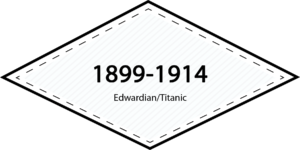
Huge ships, Grand Dames, & Gibson Girls with their perfect figures; little worlds inside a frenzied & fast-paced greater world
—— ERA IN BRIEF ——
It was a world of differences. America’s innovative yet more casual pace was influencing Europe. Grande Dames were talking over tea about how terrible it was a woman had to work, while working women were talking about the frivolous excesses of Grande Dames. The whole world was headed into war at the same time a steamship full of fashionable people was headed into an iceberg.
 —— PORTRAITS OF REAL WOMEN FROM ERA ——
—— PORTRAITS OF REAL WOMEN FROM ERA ——
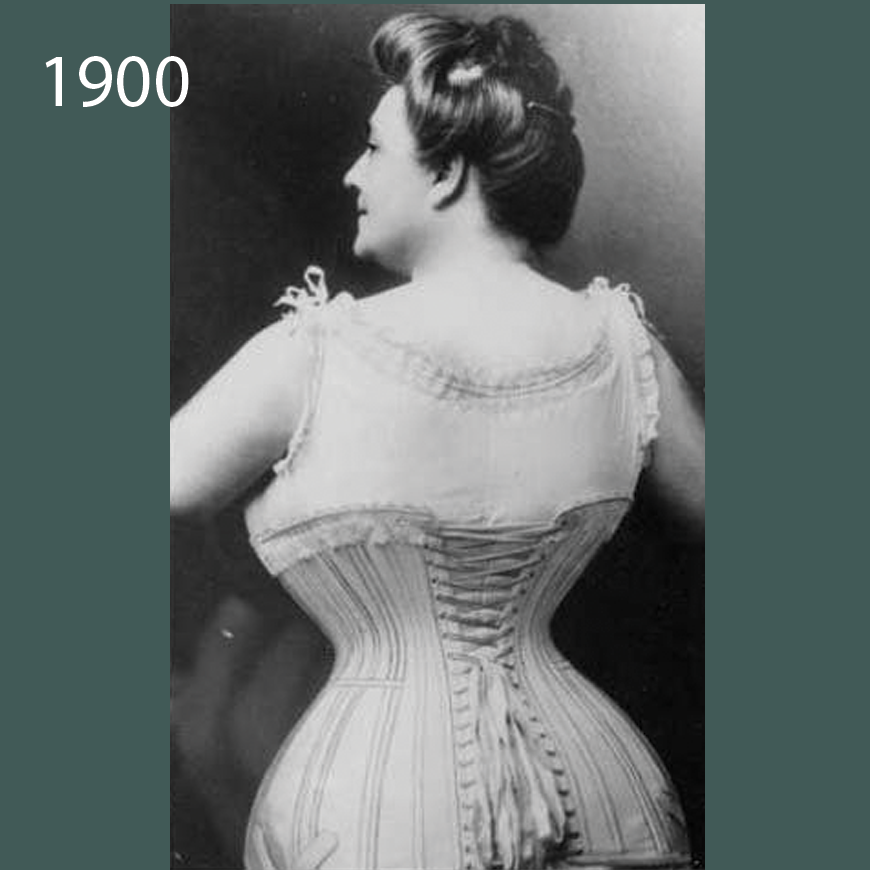
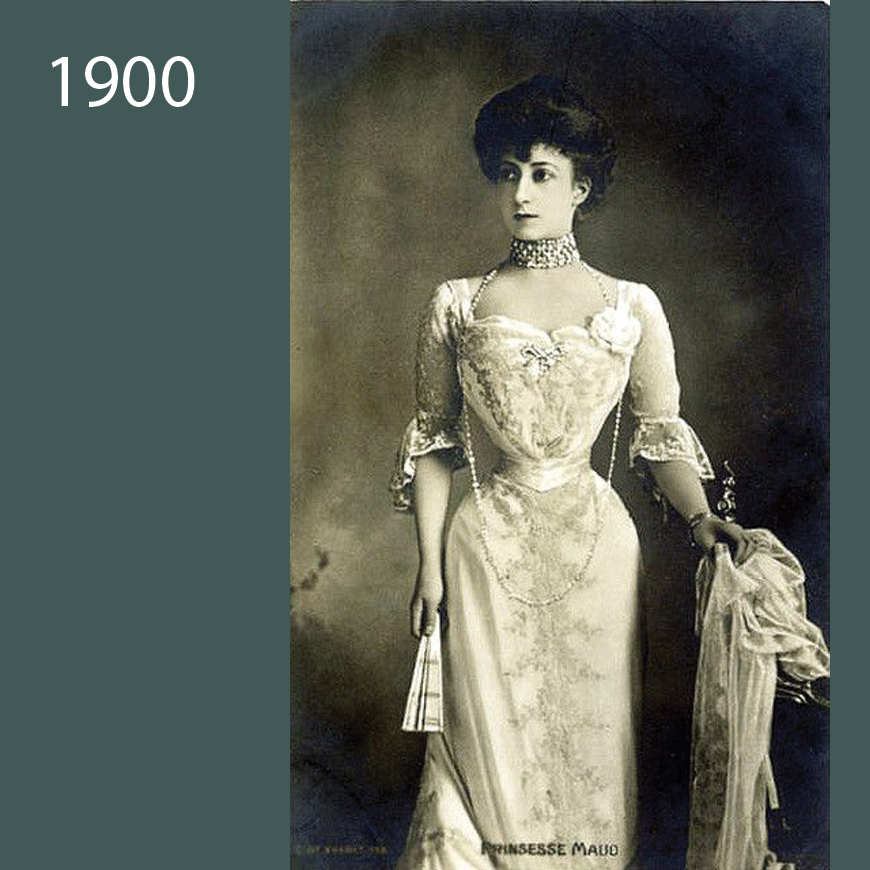
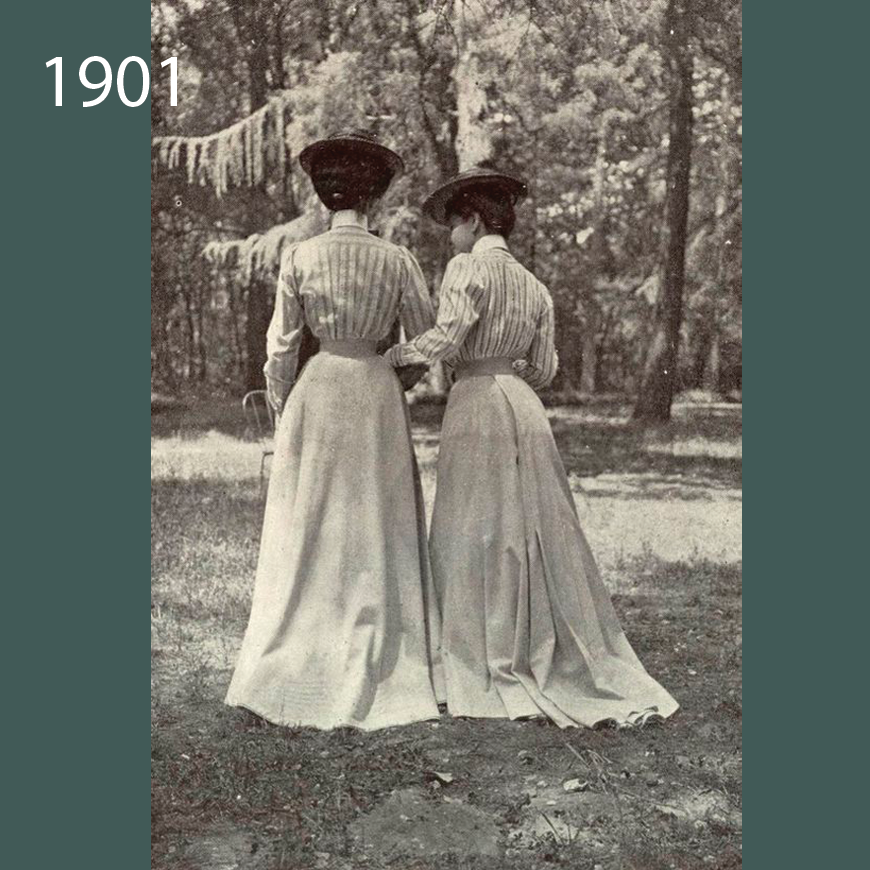
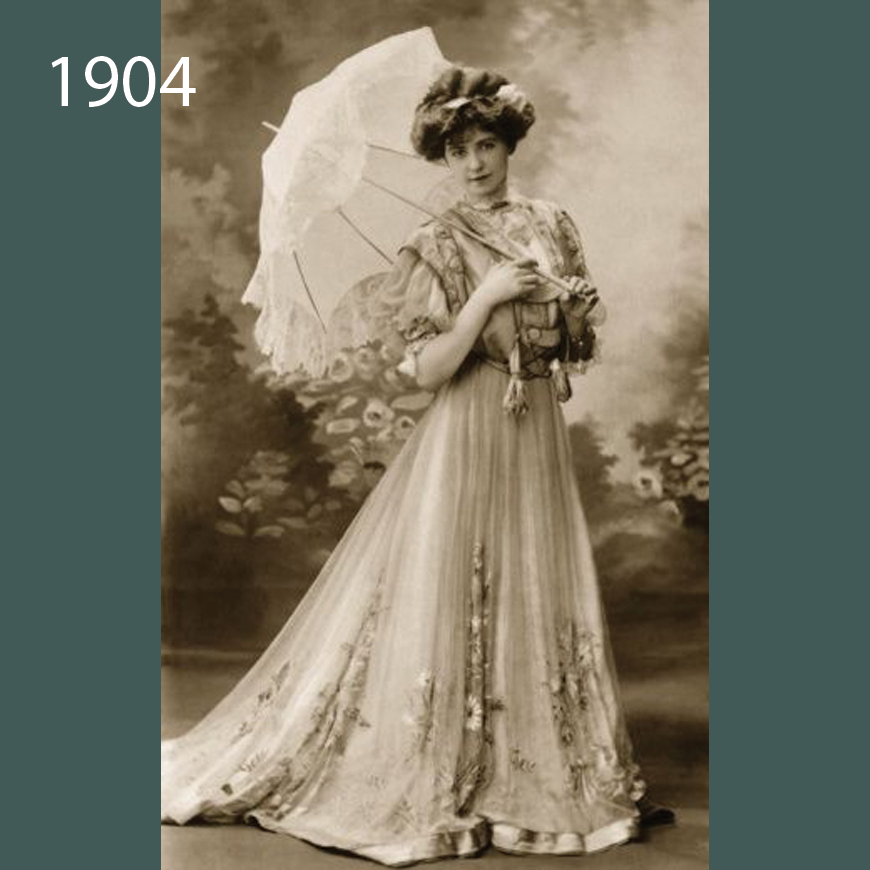
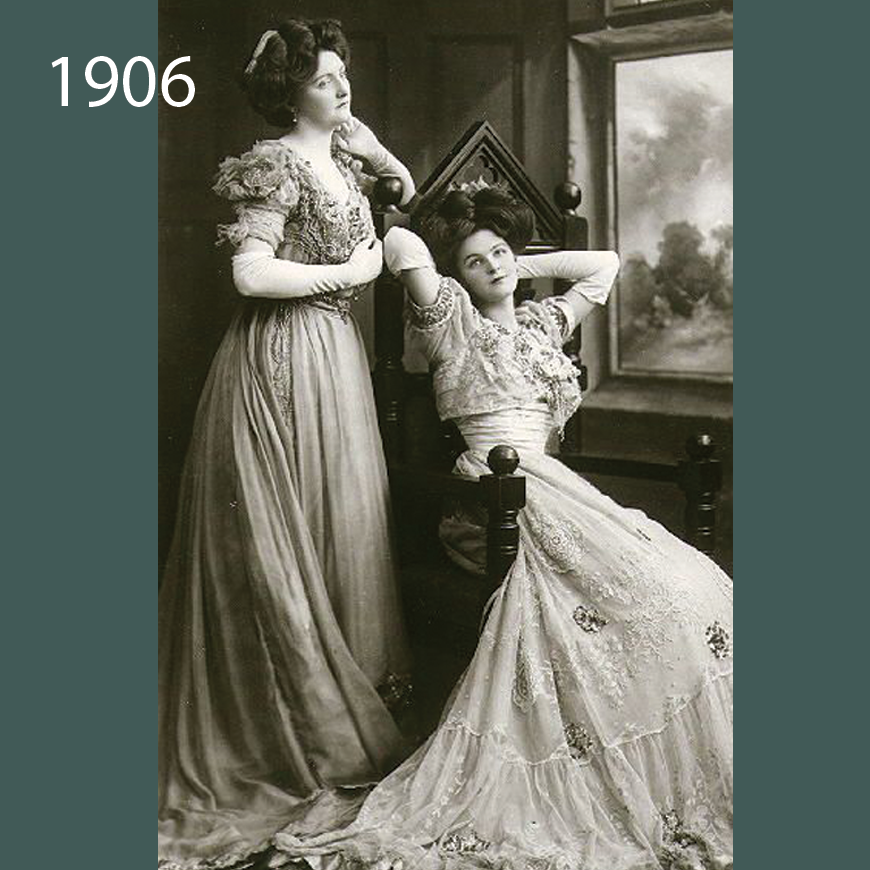
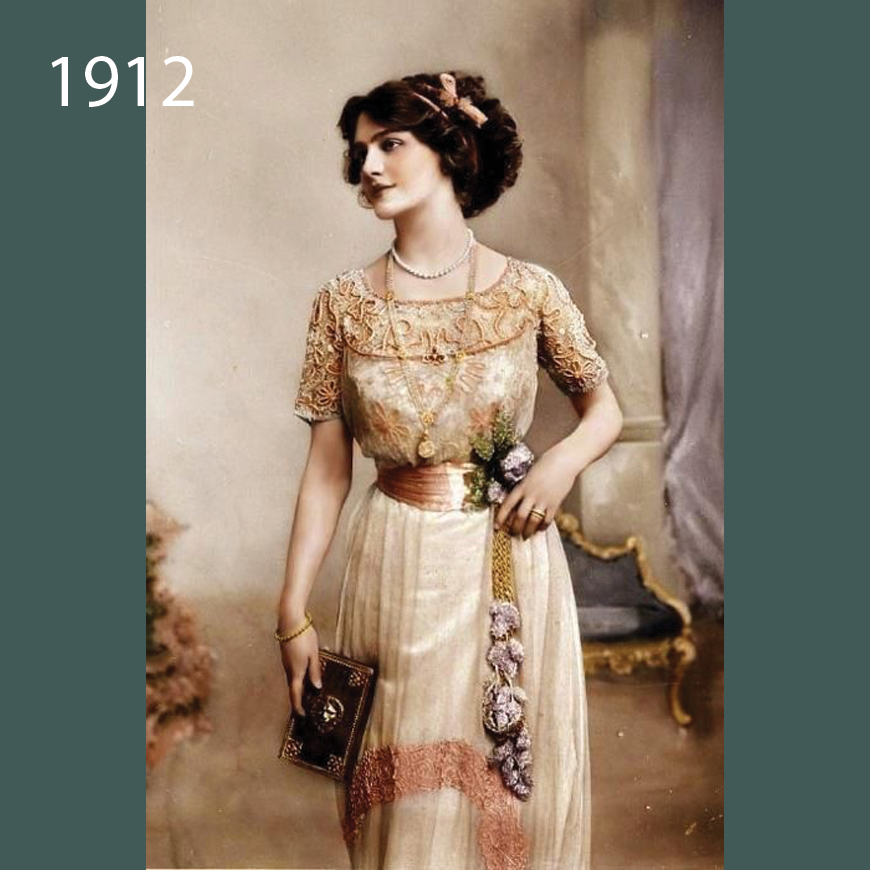
Edwardian
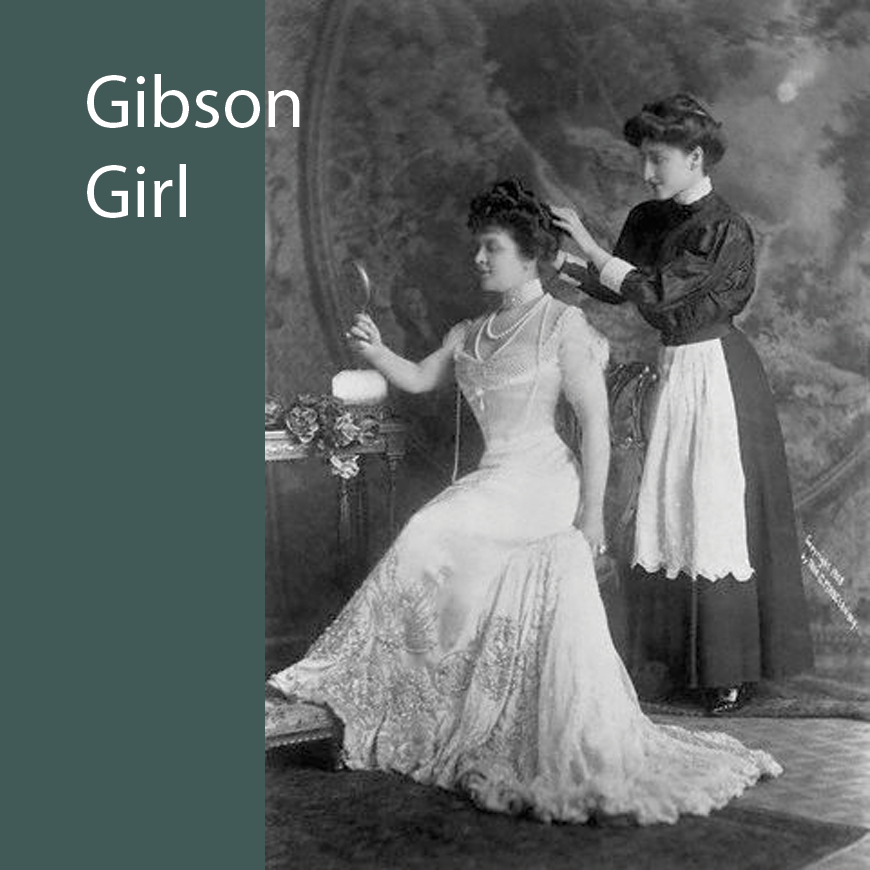
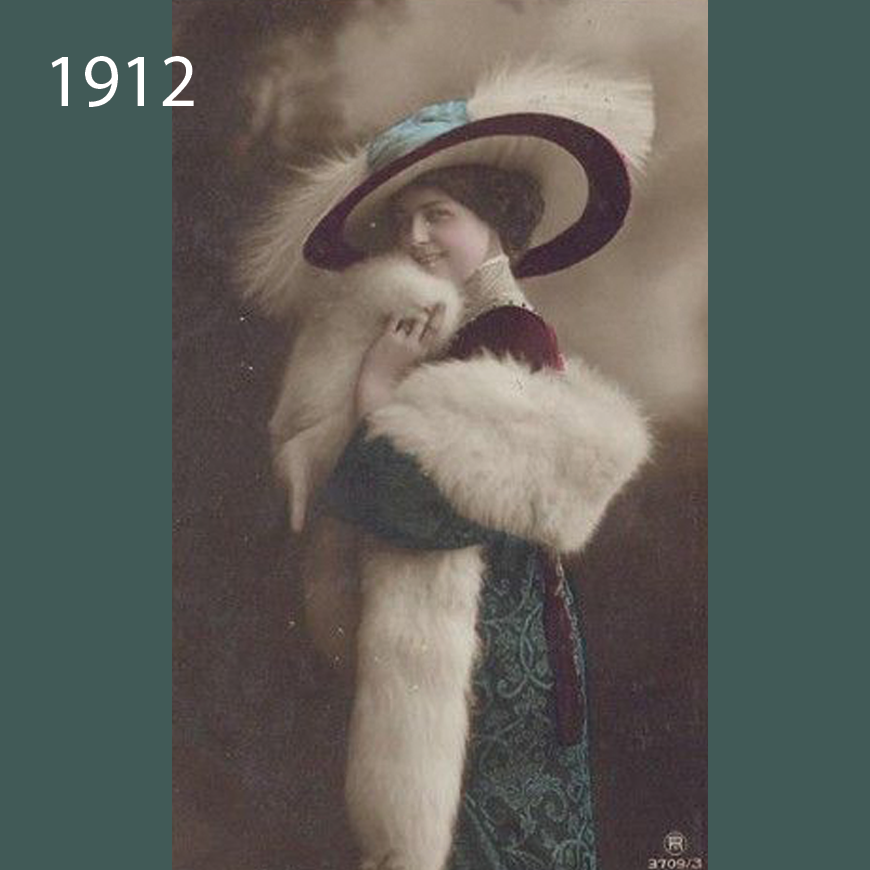
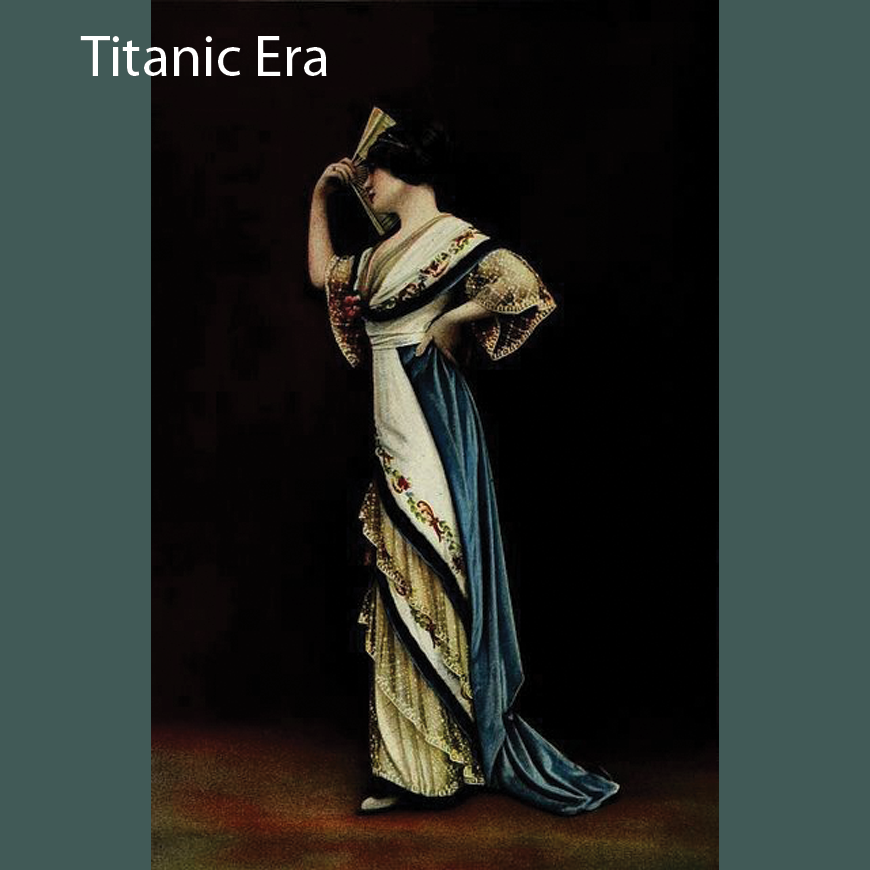
 —— WORLD SITUATION ——
—— WORLD SITUATION ——
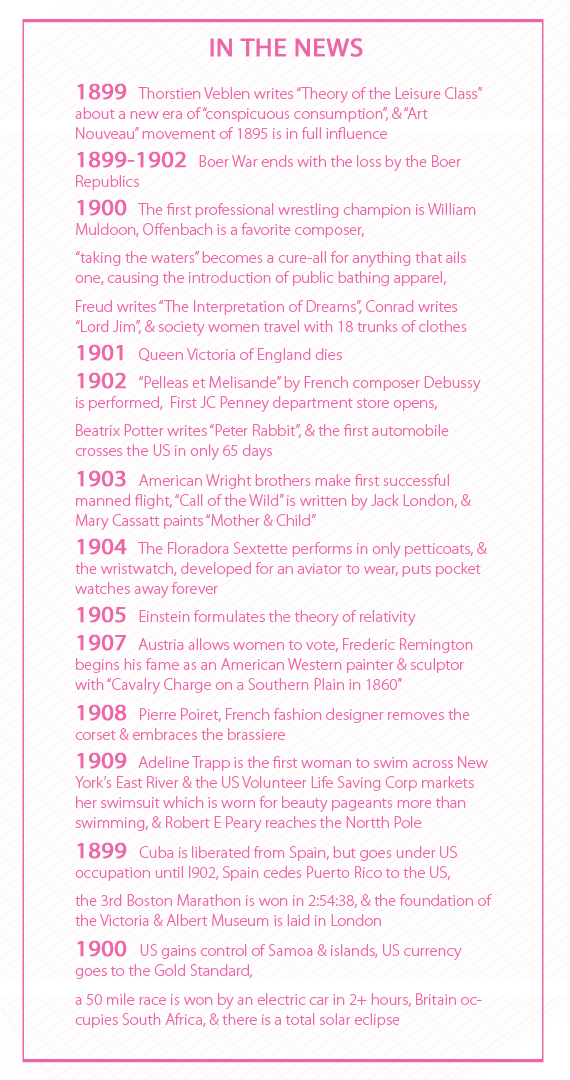
- Despite the strongest middle class yet in Europe, class structure rose again having huge disparity between rich & poor
- Class structure was now openly discussed in theory & practice by philosophers such as Thorstein Veblen in “Theory of the Leisure Class”
- Oscar Wilde wrote at this time “Nothing succeeds like excess”, highlighting conspicuous consumption to summarize the era
- The Boer War ended
- The US took over control of Cuba (gave it up, then took control again), & the Samoan Islands
- Japan & Russia were at war
- Growing concern about German military power had other countries creating alliances which would lead to WWI
- Queen Victoria of England died in 1901, giving the throne to Edward, who died only 9 years later
- The Empress of China forbid women binding feet
- Many countries including Austria & Norway emancipated women, giving them the right to vote & hold office
- Technology took yet another leap with the successful airplane flight by the Wright Brothers in America
- The discovery of oil in Texas & resultant innovations using oil changed transportation & industry forever
- Art, especially the performing arts, include more women in its influence
- Western US art with Remington & others came to world recognition
- American west outlaws become fashionable & literary favorites
- Long distance foot & automobile races provided entertainment for all
- The cure for typhoid, invention of the brassiere, the Panama Canal, electric traffic lights, & many more innovations kept the world in constant change
- The “maddening pace” of a luxurious time for many, came to a sober halt when the Titanic steamship sank in 1912. It became a rude awakening that progress needed to proceed with caution
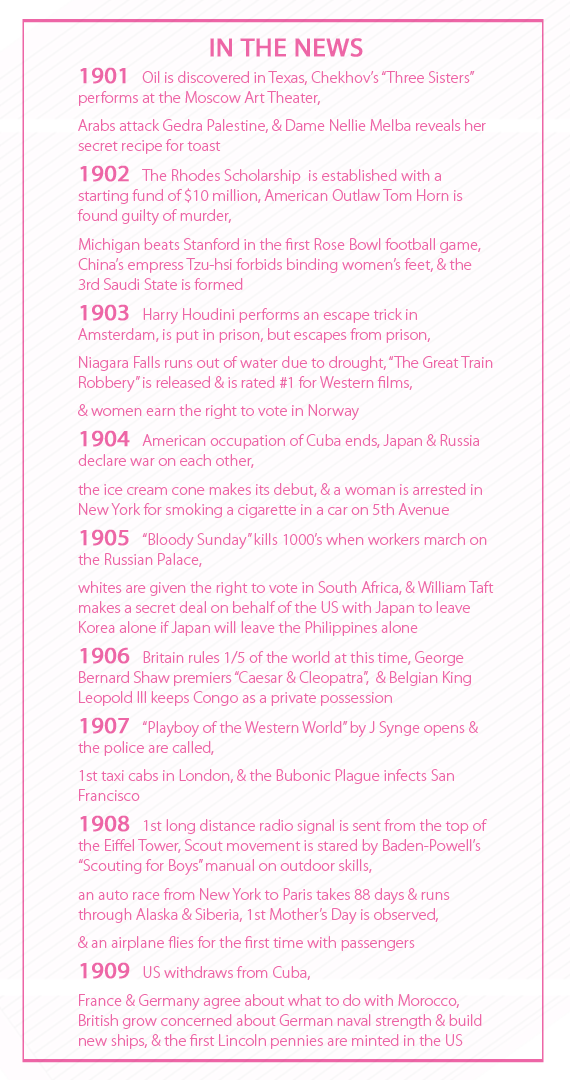
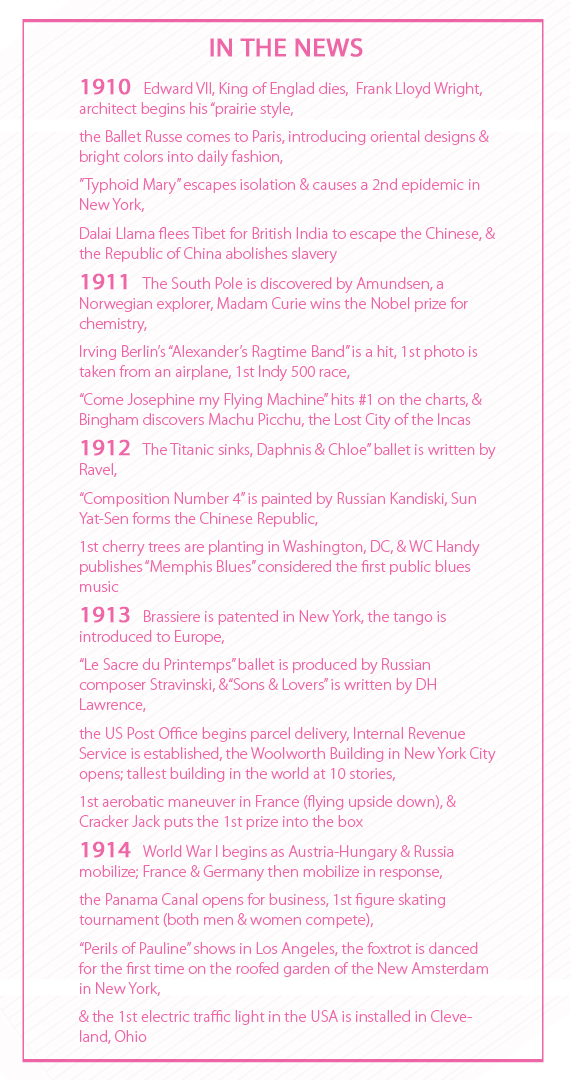
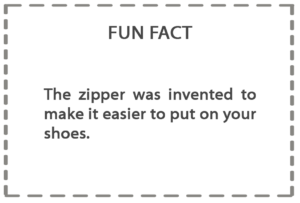

—— INTERESTING FACTS ——
THE EDWARDIANS – GOLD ON THE SURFACE
- The era cannot be precisely tied to King Edward of Britain’s reign (1901-1910), although the term “Edwardian” applies to mean the period from about 1895 to 1914 when he reigned
- “Edwardian” included the “Titanic” era
- This “golden age” was believed to have been so much more intense because its bright & happy mood contrasted with the darkness of the wars just ended, & those which seemed to be lurking on the horizon as countries allied into what would become the first World War in 1914-5
- “Edwardian” also cannot be tied down to just one concept or philosophy, as it embraced counter movements & opposing trends in every realm of society, politics, & fashion, although at the core was King Edward & his “Set”
- Edwardian Britain almost seemed to belong to another age & a different world in comparison to what was happening in reality around the world
- Edwardian was more of a utopian dream where people lived just to attend rounds of parties, banquets, & to wear extravagant clothes in a leisurely lifestyle
- London society in reality was dominated by the Queen, & then the King
- There was class structure which included the working poor, & a strong middle class
- It was only the upper class that could truly be called “Edwardian”
- King Edward had an insatiable appetite for indulgences from wine to women, & surrounded himself with handsome older women in particular
- The king mixed with women of all classes, but in actuality, his personal circle of friends was “The Marlborough Set”
- Wealth, birth, & manners were qualifications to join Edwardian High society
- The “Set” was more of a club, not a caste or class
- It was the adherence to many strict rules & formalities that emphasized the difference between those on the inside & those on the out
- The “Set” was actually made up of only about 600 London society families
- This did not stop everyone else in Britain from considering themselves as belonging to the elite society anyway, & emulating those 600 to try to get “in”
- People of all classes had ostentatious displays of dress & lifestyle
- At the time, 1/3 of the English population was living above their means trying to present the Edwardian image
- Edwardian hostesses were the most ostentatious. Known as the “Grande Dames”, they presided over every decision & rule of etiquette as well as the many activities & functions the Edwardian lifestyle dictated
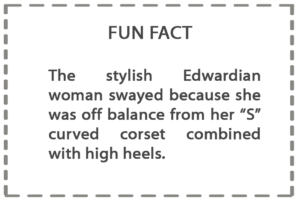
- If a person broke the rules, they were “cut” – removed from guest lists, & considered “extinct” by the “Dames”
- Edwardian love affairs were of note in this era. They had rigid formality & a strict code enforced by the “Dames”
- The entirely leisurely life could become dull, so sexual intrigue made things interesting.
- Both husbands & wives took lovers
- The main business of an upper class girl was to dine & dance until she married so she could become a “Grande Dame” hostess
- Girls were little educated for anything other than table manners & etiquette, as they spent most of their childhood outdoors.
- They were taught specifically how to behave in society, & very little else
- An Edwardian daughter would have a “coming out” at age 18
- A girl signaled she was ready for marriage by putting up her hair & lengthening her skirts
- Young girls would be brought to Court at the “coming out” to be presented to the King & Queen during the “London Season”
- During the “Season”, girls would dance all night & shop all day, attend garden parties, or call on acquaintances
- Even after a marriage engagement was made, a young Edwardian girl was expected to remain innocent
- She was chaperoned at every moment, especially in the presence of her intended
- Edwardian men had no such rules or restrictions during or after the engagement
- The “shooting party” was a huge event that marked the height of fashion. Men & women would ride together
- For “shooting”, there were complex rules & etiquettes with appropriate attire & demeanors the same as at all the other Edwardian activities
- Partying with Dukes, dining at Maxim’s, auto races, croquet, & elegance were a way of daily life for the Edwardian Set
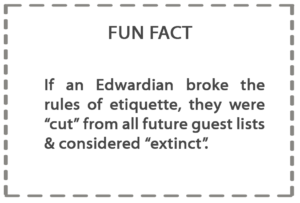
- A complex concept dictated Edwardian style:
- Because the industrial revolution put women to work in factories or other venues, Edwardians thought ANY woman who worked or participated in the greater world (the world outside the home) such as science or politics, demeaned the status of that woman. She was no longer “fit” to be a marriage partner or manager of a domestic household
- In other words, a woman who worked or participated outside the activities prescribed by Edward, no matter what the work or participation was even if it was noble such as being a physician or scientist, was considered to be of unskilled labor of lesser status than even their domestic help (domestic help, rural, or factory workers not even being considered for evaluation in the first place)
- An Edwardian woman who worked, according to the “Grand Dames”, could therefore have no contribution to her husband or his success, & so was worthless
- Needless to say, Edwardian women avoided work of any type if at all possible
- To show she was still important in an era where a woman in the workforce was considered to be the highest status to achieve, the Edwardian woman had to work very hard to prove she didn’t NEED to work
- This philosophy, seemingly polar to all that was happening in the world at the time with women achieving notoriety, fame, respect, & self-consciousness, created an active & highly visible leisure class
- The Edwardian woman was one who lived solely & exclusively for leisure & luxury
- As part of the proof they didn’t need to work, fashion became completely ridiculous & unsuited to doing work of any sort of activity at all
- Edwardian fancy detailed clothing were easy to obtain from the sweat shops of lower classes, although most had theirs custom tailor made
- Where they spent the money was on having so much of it
MEANWHILE ON THE OTHER SIDE OF THE PHILOSOPHICAL “POND”…
SOMETHINGS DON’T GO AWAY; THEY JUST CHANGE
- The Victorian era “officially” drew to its close in about 1900, although it is credited with style influence until 1915 also
- Although the term “Edwardian Era” applied until the start of WWI in 1914-5, the core concept was fading already by about 1904
- By 1910 the term “Edwardian” applied only to those few elites who could afford the luxury
- The Gibson Girl ideal was still alive & well through the period
- Her popularity ran parallel to the other trends from 1890 to 1910
- The Gibson Girl would lose influence as the era progressed
- She would evolve into “the girl next door”
- The “Titanic” era around 1912 of steamships, fast sports cars, & a fast paced world, signaled the end for all practical purposes of the Victorian AND Edwardian eras with their strict life & fashion rules
- The old order of “Grand Dames” faded gradually, but they were still a force to be reckoned with well past 1915
- “Dames” could be found swathed in boas, corseted like hourglasses, & with hats full of false fruit bowls & stuffed birds well after those things had fallen out of fashion for the common populace
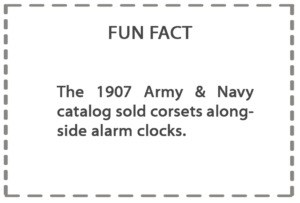
AMERICA LEADS
- As the era progressed & fortunes were lost through conspicuous consumption & non-productive leisure, Europe shed the Edwardian extravagance to embrace instead the American concepts of efficiency & function
- America led the influential relaxation of rules
- American wealth brought increasing influence
- Being on top of all commerce, trade, & industry in the world at the time, it was only logical that America would – for the first time in history – be on top of & lead the fashion of the day
- The American lifestyle was of more casual style & leisurely pace, easier to afford, & easier to maintain than Victorian or Edwardian
- The youthful American spirit pervaded science & technology, which inspired others outside of America to innovate
- Americans, for example, had dress fasteners before Europe had them
- Chicago inventor Judson’s invention of the zipper for camping gear, led to its use by the American BF Goodrich company on rubber galoshes
- Seeing the success of the zipper on footwear, French High Fashion designers trying to avoid as “Esquire” magazine wrote at the time “the Possiblity of Unintentional & Embarrassing Disarray” figured out how to install zippers in men’s trousers
- France hung on to their notoriety & market share when they developed “Haute Couture” & “La Belle Epoque” style (dicussed separately)
INVENTION CHANGES LIVES
- Whereas photography had recorded how real people looked in clothing, this era had film
- For the first time, people could see how others moved in their clothes, & how the fabric behaved
- This strongly influenced their buying behavior & the definition of what was “fashionable”
- Inventions were allowing life to be more sanitary & safe for most
- Those who had in previous eras been promoting simpler ways of life & reform for women, were now being accepted
- Movements that had been considered out of line in suggesting women trade their corsets for comfortable clothing were gaining momentum (although the corset was still worn)
- Improvements in working conditions & reforms for workers in both America & Europe were the result of gaining credibility for what had been considered radical ideas before this time
- Women were integrally a part of technology & development with scientists & inventors such as Madame Curie
- This gave women input in the design & use of machines, devices, innovations, & especially garments, textiles, & clothing
- Now an active part of society rather than a passive domestician, all women of all classes (other than the Edwardian “Dames”) openly took part in active leisure pursuits & sports
- Women were gaining independence, & moving outside the household
- The first modern Olympics of 1896 changed the type of fitness focus
- Men & women now competed in the same events, & sometimes against each other
- Women needed completely different clothing to be competitive
- With all the progress towards emancipation throughout the world however, women were still not able to support themselves, as they were limited in the type of work & wages paid
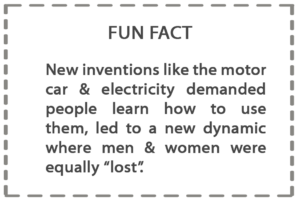
 —— FASHION TRENDS ——
—— FASHION TRENDS ——
CLOTHES FOR ALL
ROYALS & WEDDINGS
- This era had 2 predominant fashion figures in addition to King Edward: Princess Alexandra who had been in favor since 1863 when her marriage to the Prince of Wales introduced the world to her fashion, & her son George in 1893 with his marriage to the very popular & stylish Princess May of Teck
- Royals Alexandra & May epitomized the Edwardian era
- They would also bring to notoriety commoners like Lillie Langtry for having affairs with the Prince of Wales
- Following the Royals’ lead & that of King Edward, people became obsessed with propriety that clothing had to fit the occasion exactly; weddings in particular
- Royal weddings had previously dictated that ermine & velvet be worn
- Queen Victoria had introduced the white lace gown which was considered to be terribly defiant & too casual as appropriate wedding apparel in 1840 because her lace alone cost 80x what an English worker was paid in a year
- White gowns with high prim necklines had been worn in the 1850’s as symbols of virginity, but were not the norm
- The streaming veil came into use in 1870; originating from the Jewish veil of 1800
- All of these features came together in the 1890’s to become the traditional wedding style we know now with white lacey dress, train, & veil
CLEAN, TAILORED, & MADE TO FIT - Except for the very poor who relied on cast-offs from the well-to-do, the desire to be fashionably dressed increased considerably from 1895-1900
- Women’s clothing in general was much more tailored than before
- All clothes were made to be dramatic, & to make a statement
- Those who could afford it, used custom designers & tailors exclusively
- From this rose “pockets” of style trends such as “La Belle Epoque” & “Art Nouveau”, along with the long suffering “Reform” & “Sanitary” clothing trends
- The “Aesthetics” were still in vogue in some circles
- The middle class did emulate the upper classes in frowning on ready-made, but were many times obliged to buy ready-to-wear due to cost since high fashion was complex & expensive
- Fashionable clothes in spite of mass production were very expensive because of the copious use of embroidery, lace, & fur
- Technological developments continued to improve, so that mass produced clothing prices dropped while improving the product
- The concept of “ready-made-to-fit” was introduced by large department stores. They would have a mass produced garment to pull off the rack that would then be custom fitted to the customer
HARD, BAKED, & MADE TO LAST - Developments in synthetic materials were significant: mousseline de soie, crepe de chine were highly popular new fabrics
- Excellent clothing samples from this era can be found in museums today, because they lasted longer than natural fabrics
- Vulcanite, a hard rubber that was invented in 1850 for use in tires, was now used for imitation jet jewelry & false teeth
- Celluloid, developed in the 1860’s by billiard ball manufacturers led to a tough pliable semi-synthetic plastic made from wood pulp & shellac
- Celluloid was used to make buckles, combs, brushes, & jewelry
- Collars, cuffs, & dentures were made of celluloid
- Although it was uncomfortable, highly flammable, & melted out of shape when used, it was easy to clean & maintain
- Celluloid became wildly popular & heavily used in men’s & women’s readymade or tailor made garments
- Bakelite was invented to replace celluloid. It was a less flammable synthetic plastic which was used for everything from the first black telephones to dance floors & bracelets
- Bakelite was the predecessor to plexiglass & nylon
- The patent for rubber was registered in 1832, but was not used in shoes until 1873 when they were called “croquet sandals” and only the rich could afford them at $6/pair
- By 1900, Sears Roebuck sold a pair of “sneakers” with rubber soles for $.60/pair
- Ready-to-wear could be easily bought in large retail stores such as Whitelys, Woolands, Liberty & Dickens, & Jones
- Catalogs such as those from The Army & Navy Stores & BonMarche sold corsets alongside clocks
- The sewing machine, commercial patterns, & increased ready-to-wear & catalog trade enabled a shop assistant or maid servant to have an air of fashion on her day off
- Sundays & Bank Holidays were regarded as opportunities to dress up & give the impression of prosperity & wealth
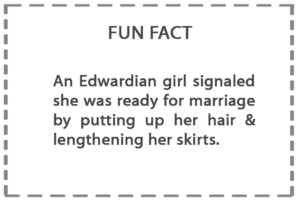
DIFFERENT CLOTHES FOR ALL
- This is a complex timeframe to describe because so much was happening simultaneously, & influences came hard & fast from around the world
- Fashion would evolve AND crossover each during this era.
- From 1900-1910 the silhouette would change from the hourglass to straight up & down lines as it went from the end of the bustle, to the lacy & romantic Edwardian ideal, into “Belle Epoque”, through “Titanic”, & into “Art Nouveau” – after which fashion changed completely & forever with the start of World War 1
- ( We cover Edwardian subcategories “La Belle Epoque”, “Art Nouveau/ Arts & Crafts”, & “Working & Sportswear” as separate eras)
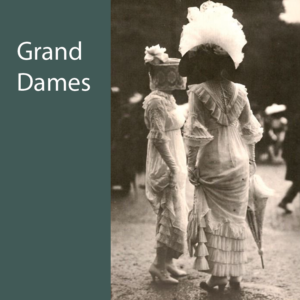 GRAND DAME
GRAND DAME
- The recognizable standard for “Edwardian Classic” was a forward thrust large singular bosom with wasp waist, full hips, bell skirt (narrower than Victorian), graceful long high neck, long sleeves, & odd walking gait
- The chest thrust forward with large rear thrust back with the off-balance appearance known as the “Pouter Pigeon” , had been seen almost exactly 100 years earlier, although it was now much more technologically achieved through corsetry & materials as opposed to then when it was done through padding & false rumps
- The long controlling corset that went far down over the hips created what is jokingly called a “monobosum” because there was no breast separation
- The lady “swayed” because of the effect of posture with the S corset & the curved silhouette which covered her feet in a somewhat tight skirt
- All hoops, bustles, & understructures were completely gone, though hips were still a prominent focus literally & figuratively
- Clothes at this time still followed a basic shape, but by 1908 the drapery on the bodice no longer conformed to a formula as in earlier periods
- This straying from design demanding a customized & tight fit was largely the result of ready-made, which was unable to get exact size & fit
- Paper patterns were now mass produced as well based on scientifically generated size charts
- By 1900 sewing machines were good enough that most women could sew well enough at home to make a garment
- Because of the desire to look lacily & leisurely feminine according to the ideal woman, mass production making looser garments with poorer fit, women making their own clothes, & new soft synthetic fabrics, dresses by 1906 had a softer look
- In 1906, many dresses were elaborate creations of chiffon or soft silk with lace insertions, instead of the hard tailored & tightly corseted 1895-1900 models
- At the same time, active wear & work wear followed a different path (discussed separately)
- Clothing by 1910 came in a huge variety of styles & acceptable fashions for every activity, function, & lifestyle
- All of these were called “Edwardian”
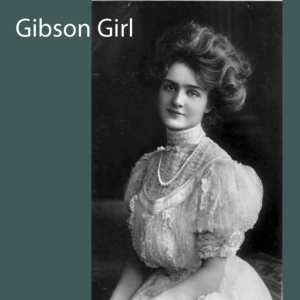
GIBSON
- Gibson Girls were introduced in 1895 & were icons from 1890-1910. 1906 was the peak of their influence (these were discussed in the last era in detail)
- Embroidered blouses worn with skirts such as the Gibsons wore were popular in both America & Britain
- The best known Gibson look was a shirt collar worn with either a tie or a floppy artistic bow, or a neck cravat with a stick pin bar brooch or crosscut ruffled jabot
- Beautifully embellished ornate blouses took on new importance thanks to the Gibson Girls.
- Every class wore the look; home dressmakers emulated the fussy couture blouses by using pin tucks, embroidery, applique, lace insertions, faggoting, pleats, & lace trim to get Gibson effects
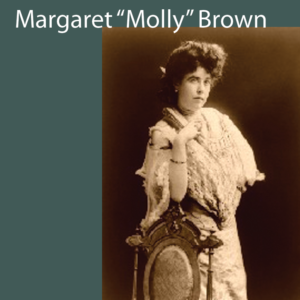 TITANIC
TITANIC
- The early 1910’s were a transitional era for women’s fashion
- Art Nouveau (discussed as a separate era) & the Arts & Crafts Movements ended about 1909
- Designers of La Belle Epoque, under increasing influence from Asian & Middle Eastern cultures was switching directions from the “S” figure to the Princess Line with its tight fit, to the loose draping that would lead to the dropped waist
- “Titanic” appeared in 1912 at this transitional period
- Women’s silhouettes shifted from the voluptuous S bend (small waists, large bosoms, curved rears) to a straighter, lighter line that seemed more natural & modern to people at the time. It was a style that had been around for some time, but had been ridiculed
- Pouched bodices, curving belts, flounced skirts, & jewelry indicated the growing influence of the “Art Nouveau” with its fluid curves
- Inspired by the Ballets Russe with its Asian influenced & innovative costuming, French & English designers incorporated an orientalist aesthetic which used rich fabrics in vibrant colors
- Dress design began to follow the cut & drape of Asian garments such as the kimono, while simultaneously referencing the Directoire period of France (1795-99) with the high waists & light muslin gowns
- By 1912, the “Titanic” Era, had lines that were simple, sleek, & very straight with some classical Greek & Byzantine influence similar to that of the “Art Nouveau”
- The difference between “Titanic” & “Art Nouveau” was “Art Nouveau” rose out of the “Arts & Crafts” movement, which rose out of the “Aesthetic” movement, which came from the “Pre-Raphaelites”
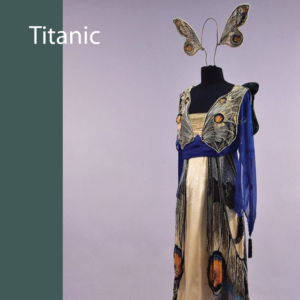
- “Titanic” was a stylish fashion of color, textures, & line that came from copying favorite forms without a philosophical basis
- “Titanic” was part of the “Haute Couture” or high fashion of the wealthy & elite of the time, following the designs of professional designers
- “Art Nouveau” dresses were made along the simple classical lines, but had extremely ornate embellishment which used natural images such as dragonflies, butterflies, or plants (discussed separately)
- Many of the “reform” gowns that came of the “Aesthetic” dress look outwardly to be the same as “Arts & Crafts” or “Titanic” because of their adherence to beautiful fabrics with gorgeous naturally died colors, & simple ornamentation
- “Titanic” fashion was actually the summation of all of the concepts “Reform”, “Aesthetic”, & “Arts & Crafts”, from “haute couture” designers who were influenced by Asian & Eastern designs
- “Titanic” gowns being “high fashion”, were not particularly easier to wear or comfortable like the “Aesthetic”
- While Titanic gowns had the gorgeous fabrics, colors, & intricately built high craftsmanship of the “Arts” & “Aesthetics”, they were extremely complex in their layering, draping, connections & built in structural support
- Structures gave shape to the gauzy see through fabrics so they could hold up the weight of glass beads & trims
- There were also gorgeous simple suits & outerwear of rich, oriental influenced fabrics with soft tailoring
- When the Titanic sailed in 1912, her first class passengers boarded with trunks full of expensive, beautiful clothes
- Most “Titanic” clothes had probably been custom made in Paris, London, or the United States
- Dinner on the Titanic was the most elegant event anywhere in the world at the time. Dinner attire was the most formal of all
- For dinner, women wore an evening gown, no hat, long white gloves, kid leather or satin shoes to match the gown, opera bag, fan, & scarf
- “Titanic” was a high fashion statement of extreme complexity which continued to use the underlying corsetry & draping of earlier eras
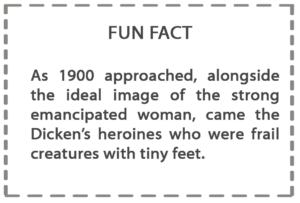
 —— SPECIFIC FASHIONS ——
—— SPECIFIC FASHIONS ——
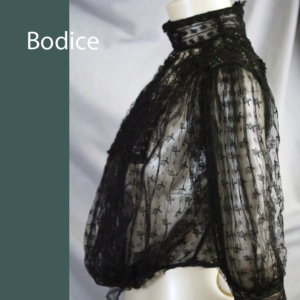 BODICES & JACKETS – EDWARDIAN CLASSIC
BODICES & JACKETS – EDWARDIAN CLASSIC
- By 1900 the bodice was flat at the back & pouched at the front
- For day, ladies wore very high necks & the bosom was undefined
- The center front of the bodice appeared to be lower than the waist, an effect emphasized when the top of the belt at the center front was on the waist with the bodice falling over it
- The back of the bodice was sometimes straight around, but it was often shaped at either the top or the bottom (or both)
- For day & evening wear the bodice was build on a boned foundation
- The back of the bodice was mounted in with the foundation, while the front fastened independently down the center
- Bodice fabric was draped; some across & fastened at the side, while others had a false bolero filled in with an imitation blouse or chemisette which was a type of false front & collar that looked like it was a full shirt
- The bottom of the bodice could be straight with a belt or have a slight dip at the center front
- Many bodices were cut through into the skirt, either to the hem or ending at some decoration
- The neck was finished with a high-stand collar, although plain round or high V-necklines were popular
- Dresses were still made in 2 pieces: heavily boned bodice almost like a mini-corset worn over the S-bend corset
- The top bodice was mounted onto a lightly boned under bodice lining which fastened up with hooks & eyes very snugly which gave the light fabric stability
- At the front of the bodice, pouches of cascading lace or gathered fabric gave emphasis to the low bust line
- The neckline for day wear was usually finished with a stand collar which fit very tightly to the neck using a very curved shape
- By 1904 shoulders were sloped, & many were enhanced by the use of wide lace or ruched collars with flouncing on the edge
- The Zoave or bolero jacket was still popular in 1904 with much variation in shape, sleeve, collar, & decoration
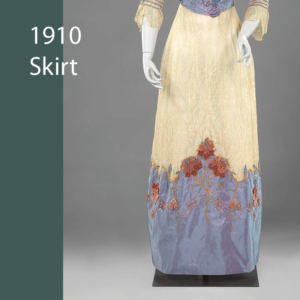 EDWARDIAN CLASSIC SKIRTS
EDWARDIAN CLASSIC SKIRTS
- Throughout the period, skirts were often gored & created an elongated trumpet bell shape
- Modified versions were less extreme over the hips
- In 1900 skirts for both day & evening were elongated at the back to form a train
- The skirt’s silhouette was slim at the hip; achieved with pleating & smocking
- Any fullness of skirt was confined to below the knee
- Decoration was applied using large & small tucks, hem ruffles, buttons, & lace insertions
- Evening dresses were more daring & were worn off the shoulder; with or without sleeves
- By 1903 the flares & frills at the bottoms of skirts were more pronounced
- Evening gowns had extravagant trains
- 1906 Skirts for day wear also had trains, even those tailored
- 1906-09, skirts lost fullness & the silhouette straightened
- After 1908, the waistline raised until it was a column like “empire line” or Directoire (Napoleon I)
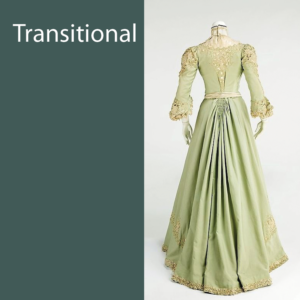 TRANSITION & TITANIC
TRANSITION & TITANIC
- The high waistline was popular from 1908 to 1912
- The natural waistline started to just come into fashion in 1912
- From 1900-1914 bare arms, busts, gloves, & sumptuous fabrics in many layers came to the front of fashion
- The 1910 evening dress was made of delicate sheer fabrics embellished with beads, lace, or other trimmings that floated over a silk underlayer
- The general outline for an evening dress was an under-dress & tunic effect using a matching bodice & overskirt
- Bodices featured short sleeves
- V necks were most common, but deep V’s with a horizontal inset, & round or square necklines were also worn
- Surplice/cross-over bodices were also popular
- Waistlines were placed anywhere from just under the bust to the natural waist
- The waistline itself was loose & softly defined with a sash or belt
- Most dresses included two skirts: one “tunic” that matched the bodice & usually ended between the low hip & the knees, & one ankle-length trained underskirt
- The underskirt was generally slim, with the tunic overskirt comparatively fuller
- While gowns of this era appear to be diaphonous & draped, they are actually mounted onto a fitted cotton bodice lining that is often boned to support all the floating fabrics
- Construction of evening gowns included a bodice lining and/or a staybelt
- Made of cotton webbing or grosgrain/petersham ribbon, the staybelt was a fixed foundation on which to attach multiple layers
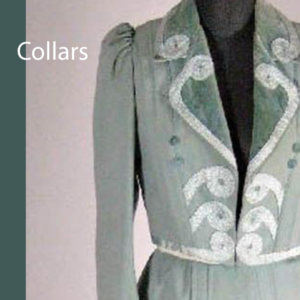 COLLARS & CUFFS
COLLARS & CUFFS
- Around 1900 collars were held in place by supports made of celluloid which was covered with silk thread
- Very deep high lace fabric collars reached right under the neck. They were kept in place with wire covered in silk that was twisted into a series of hooks & eyes
- Wire or boning supports covered with buttonhole twist were put in the collar to keep it rigid
- High collars were for day, but night had exceptionally low sweetheart, square, or round necklines that showed off huge amounts of jewelry
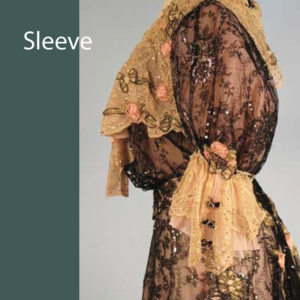 SLEEVES
SLEEVES
- Sleeves by 1900 had lost most of the fullness in the head
- The bottom now widened out & was either open at the end like a bell or caught in at the wrist as a bishop sleeve
- In 1904 Bell sleeves had frills at the wrist
- Straight sleeves developed into bloused effects at the wrist
- Sleeves of 1906 were elbow length with full puffs
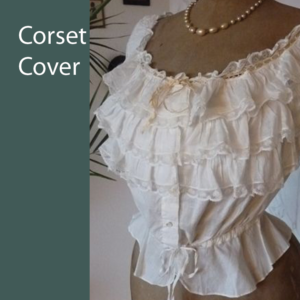 UNDERGARMENTS
UNDERGARMENTS
- With Edwardian ladies of 1899, very dainty underwear was worn, with lace frills that popped out of throat & wrist
- Lace was clustered over negligees & tea gowns
- In 1900, women spent 1/5 of their clothing allowances on undergarments: lace trimmed petticoats of satin, brocade, & silk
- Blue, pink, yellow, & black were most popular petticoat colors
- By 1902, it was considered vulgar for the petticoat to be heard, so silent petticoats made of soft materials became chic
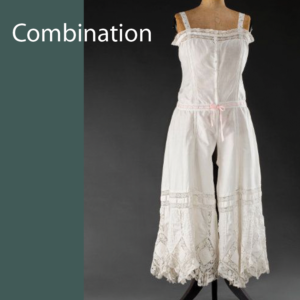
- The “teddy”, worn in this era as undergarment, would become an outer garment when “La Belle Epoque” gave way to the boyish flapper look in the 1920’s
- Undergarments were combinations (shifts & drawers merged) or long princess line chemises worn over split drawers
- To maintain the slim silhouette of 1910, underwear was trimmed only with flat bows or bands of lace
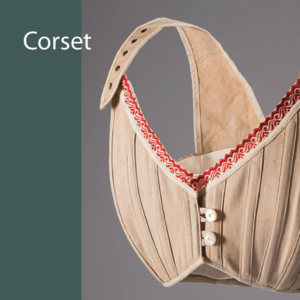 CORSETS
CORSETS
- The shape of the period more than any other was created by the corset
- The aim was to make the hips more rounded & the waist as small as possible; to flatten the abdomen & encase the body in a more rigid & upright position
- From 1899-1904, the extremely rigid, long “S” corset with the inverted spoon busk was worn to create the long, smooth flowing line; especially for the flat-fronted tulip shaped skirt
- The busk would change & the shape modify somewhat through the transition, & depending on the mode (“Classic”, “Gibson”, etc.) & activity
- There were many, many corsets available of every type for every activity from active sports & special riding or health corsets, to handmade boudoir silks worn by performers (with nothing else) on stage
- Corsets from 1900-1908 had a straight busk down the front & were tightly laced
- No cleavage was visible, as the bosom was suppressed
- By 1909 beneath the new straight gowns, women wore corsets that began under the bust & extended well down over the hips
- The new silhouette objective after 1904 was a long, columnar line, so corsetry was less focused on restricting the waist & more on smoothing the hip
- “Bust bodices” or “brassieres” supported the bust for those who did not wear a corset
- In 1910, early Brassieres looked somewhat like corset covers – sleeveless, white cotton garments that ended anywhere between the bottom of the bust & the waist
- Brassieres could be boned or unboned, depending on the amount of support needed
- These provided a soft foundation that could go higher than the Edwardian monobosum, but still lower than our modern silhouette
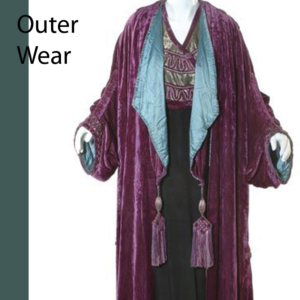 OUTERWEAR
OUTERWEAR
- Lavish gold metal embroidery, velvet, & fur trim were used on muffs & coats which looked like the high-waisted Directoire style of the Regency Era
- Short jackets were made of or had fur trim
- New “dusters” & long coats with scarves, goggles, & gloves were worn for the new motorcar (discussed separately under “Work & Activewear”)
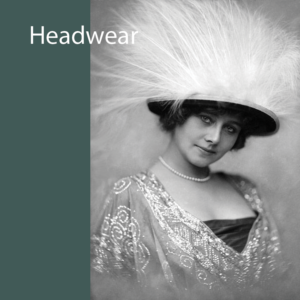 HAIR & HEADGEAR
HAIR & HEADGEAR
- Huge hats with birds, feathers, flowers, plants, lace, ribbons, & “frou-frou” were still worn, but were fading from popularity
- Tailored silk, felt & straw hats with large brims were popular with the more tailored styles
- The “Gibson” hats were huge with copious amounts of trimmings
- Winter hats & muffs were of the same – large for Edwardian Dames & Gibsons, but small for the later styles
- Fur hats were usually made from short-haired sources such as Persian lamb, sealskin, beaver, sable, or mink
- As the “Grand Dame” faded, hats became smaller
- Small hats were worn cocked on top of the head & decorated with “jaunty” plumage
- Hair was worn long & high with waves frothing around the forehead
- With specific styles as “Titanic” or “Art Nouveau”, hair returned to classic Greek & Byzantine influences the same as were influencing the lines, fabrics, & ornamentation of the clothing
- These short hair cuts used the new technologies of curling irons & various types of rolling papers
- The blow dryer, still weighing over 20 pounds, was used in salons by professionals
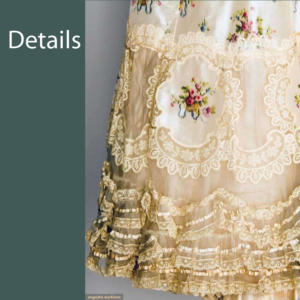 FABRICS & COLORS
FABRICS & COLORS
- Fabrics of the era included spinspure silks, cottons, woolens, & taffeta
- Taffeta in particular worked well for the bouffant Edwardian or overlayering Titanic styles because it had a crisp light quality
- Other favorites for draping were satin that was backed with silk or cotton which could almost stand on it’s own compared to the somewhat limp satins of today
- Light colors were generally used for evening wear & were considered more appropriate for young ladies
- Cottons like muslin were also popular for young women
- Starting in the 1860’s, & continuing through the era, silk, satin, taffeta, faille, moire, silk poplin from Ireland, & velvet were appropriate for mature women & for formal wear for all
- Many of the softer colors, both pale & dark, gave way in this era to the synthetic aniline dyes
- Strident magenta, electric blue, & vivid yellow were used in stark contrasts in the same garment in the 1870’s-1880s
- In the 1890’s the softer, more muted colors returned, along with popularity of fine soft wools such as delaine – a cloth resembling cashmere but with a silk warp or weft
- Delaine was especially favorite for the more mannish serge or tweeds used in the tailored suits & dresses
- Liberty silks of the last era’s “Aesthetic” movement, & Eastern influence were gradually shifting style towards subtle colors, but the 1890’s still maintained an image of fairly bold color & pattern using broad stripes
- Guipure lace & passementiere braid with jet were other bold favorites
- Through the 1890’s, there was increasing use of mousselaine de soie (a fine chiffon)
- As the century changed to 1900, evening gowns were made in light and/or sheer fabrics for the tunic layer, with solid light or medium weight fabric for the underskirt
- Fabrics of 1900 included organdy, charmeuse, chiffon, tulle, crepe, crepe de chine, & lightweight versions of velvet, velveteen, satin, & brocade
- Popular evening gown colors for the 1906-1909 era were pale: steel blue, pale blue, lemon yellow, cream, pink, & white
- New influences of orientalism introduced stronger colors like black, royal blue, & emerald as 1914 approached
- It was in the style & trimmings that the influence of orientalism was most apparent
- Purple was generally avoided for evening dress because it looked brown in the newly installed gas lights
- Evening dresses almost always had some visual element added such as pleating, assymmetrical draping, beading, embroidery, or brocade
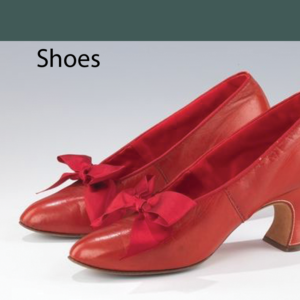 ACCESSORIES
ACCESSORIES
- High button shoes were associated with the whole Edwardian era
- Lacing shoes came into style around 1910
- Boas with evening wear to cover cold exposed bosoms
- Small pretty aprons were worn for sewing or similar “ladylike pursuits” until about 1865, but after that aprons became larger to cover the full front of the dress
- Aprons by 1880 were largely used by housewives, cooks (in gingham or white linen), parlor maids (fine cambric or linen with bibs), & by teachers, governesses, or shop assistants (black sateen)
- Belts by 1906 were very deep & straight across the top, giving the body a slightly short-waisted & long-skirted look
- Gloves were still considered essential for both men & women. Women’s gloves were short to the wrist or a little above, until the 1880’s when long gloves to the elbow were worn for evening, and some 3/4 length for day
- All gloves were snugly fitted
- Gloves were light colored, although black became popular in the 1880’s
- By 1909, gloves were worn mostly for evening
- The Edwardian etiquette requiring the wearing of gloves for everything except to eat had been relaxed by then
- Muffs were worn throughout the period
- They were rather small & rounded made out of wool, velvet, sealskin, or Persian lamb
- Muffs became larger in the 1890’s when fur such as sable or chinchilla became available
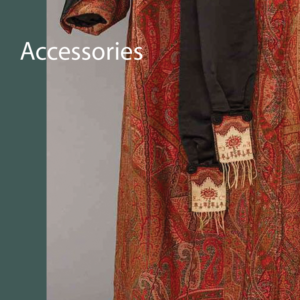
- Reticules of many sizes & shapes were used
- The same silk, netted, & beaded bags of the 1860’s were still used into the 1890’s
- Bouquet holders in gold or silver were carried to evening parties
- Chatelaine bags were hung from the waist in the 1890’s. They were attached to the dress belt using decorative buckles or clasps
- Umbrellas were used by men & women, but were more utilitarian in fashion than previous eras when they had been used for show
- Silk covered umbrellas were the height of fashion
- A tightly rolled umbrella might be used as a cane
- Parasols in the 1860’s were tiny at only 12″ in diameter when opened. By the 1870’s they varied in size. By the 1890’s they were long, folding, light-colored, & ruffled
- A popular 1890’s parasol would have black lace over brilliant pink silk
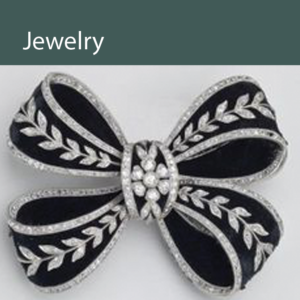 JEWELRY
JEWELRY
- Brooches were large & heavy & varied in design
- From 1865 gold & pinchbeck, garnets, turquoise set with seed pearls were popular. By the 1890’s they were of the same materials, but smaller & lighter in design, as were rings
- Sets of jewelry including bracelets, brooches, & earrings & sometimes large or small lockets were worn
- Earrings became increasingly popular as hair was drawn back off the ears
- Earrings were large from 1865-1875, then got smaller as time progressed
- Cameos were worn throughout the period
- Gold chains were worn from 1865-1890, when in the 1890’s “dog collars” of diamonds or brilliants (a style favored by the Princess of Wales) replaced them
- Watches were worn as a pendant on a chain, or pinned to the bodice having a chain that reached either into a pocket or stayed on the bodice
- Watches were most often attached to an ornamented brooch
- Bangle bracelets & decorative hair combs were other accessories
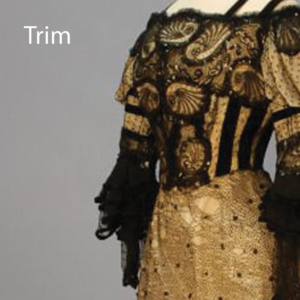 TRIMS, & DETAILS
TRIMS, & DETAILS
- Abundant use of embroidery, fur, & lace reflect the opulence of clothing at the time
- Lace inserts, lace trim, & fringe were used, with decorations often placed assymmetrically
- Furs were used for trimming
- Feathers were used to excess in hats & as boas
- The fur skin of whole animals such as foxes & often two foxes were used as wraps & stoles or trim
- The later period “Titanic” & “Art Nouveau” style included hand crafted works of art using glass beads & natural materials
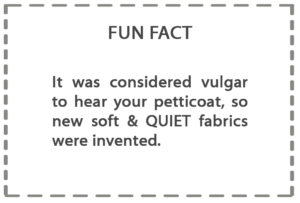
 —— ACTUAL GARMENTS FROM ERA ——
—— ACTUAL GARMENTS FROM ERA ——
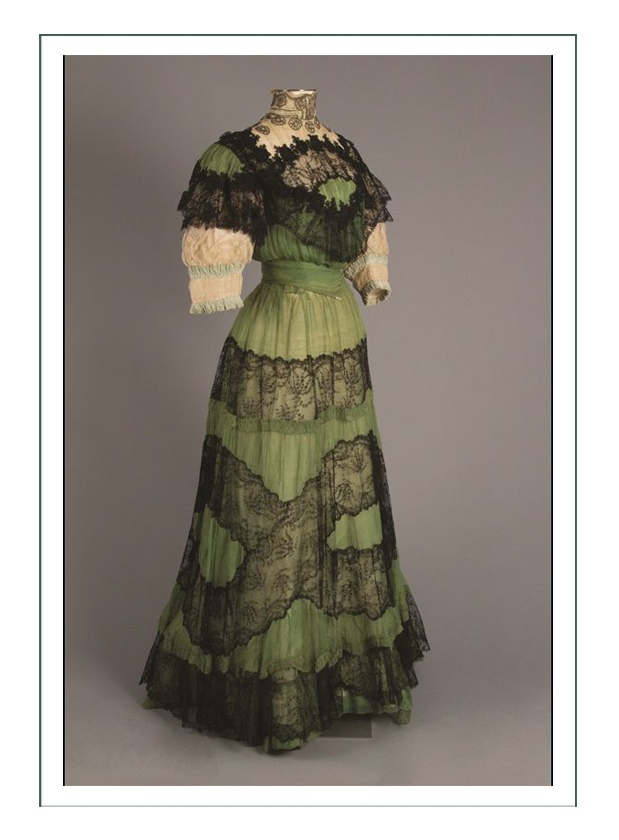
—— (above) “Reform by German Designer Beers 1898”——
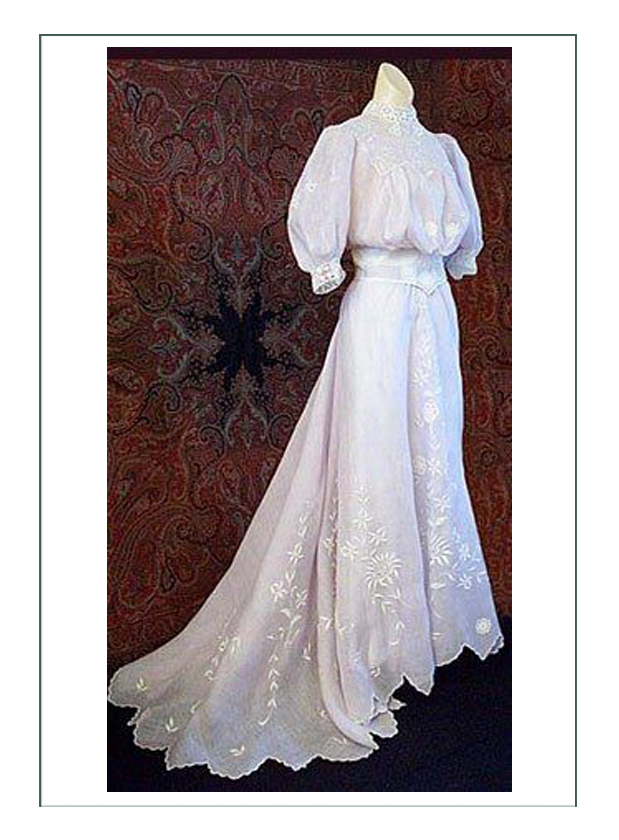
—— (above) “Gibson Girl 1899”——
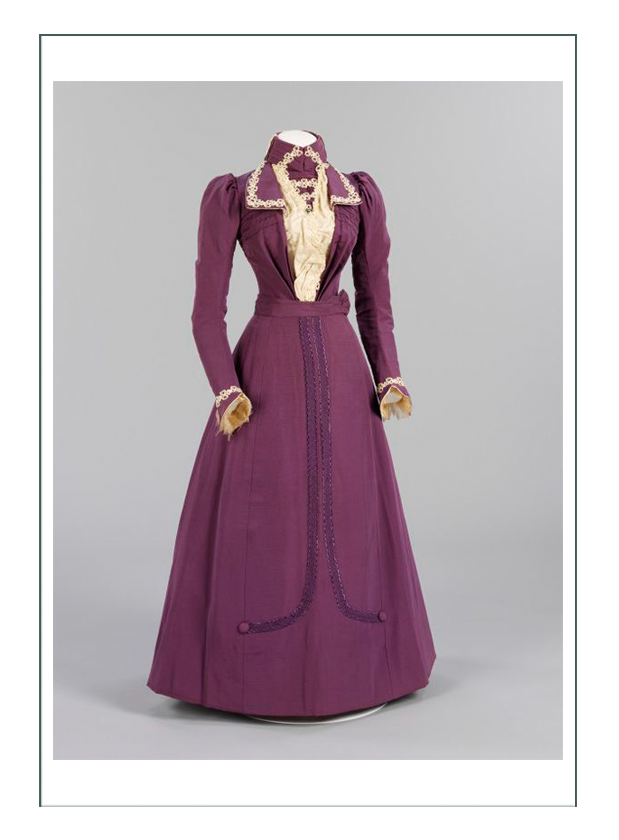
—— (above) “Wedding Gown 1899”——
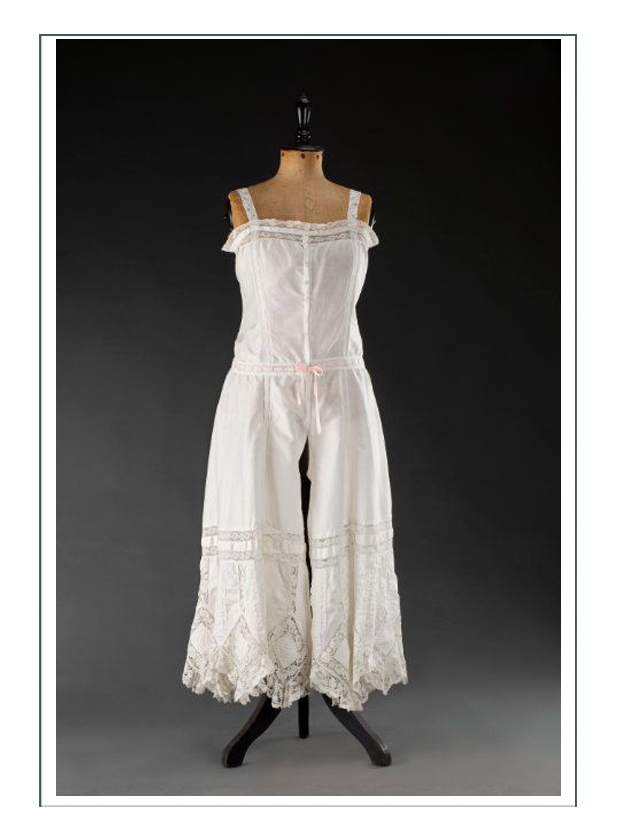
—— (above) “Underwear Combination 1900”——
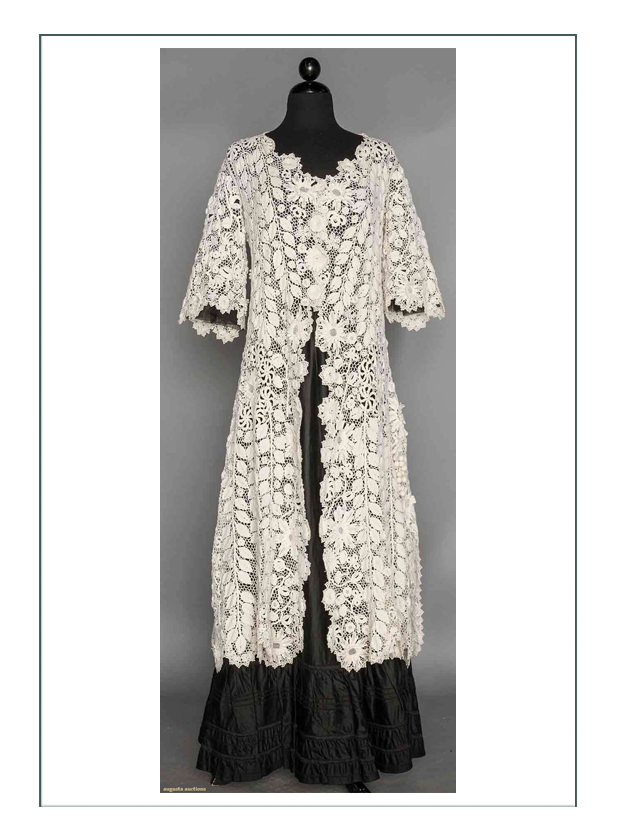
—— (above) “Irish Crochet Coat 1900”——
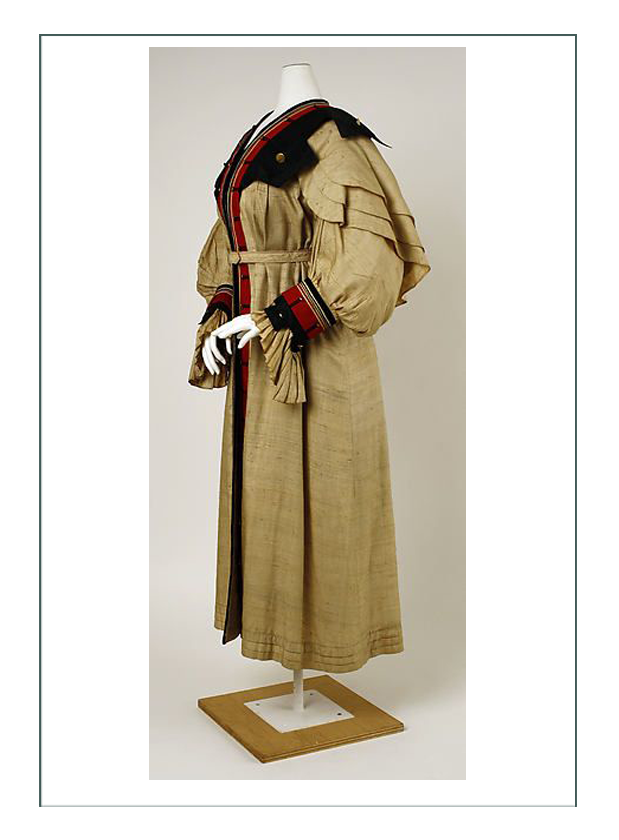
—— (above) “Duster Coat 1903”——
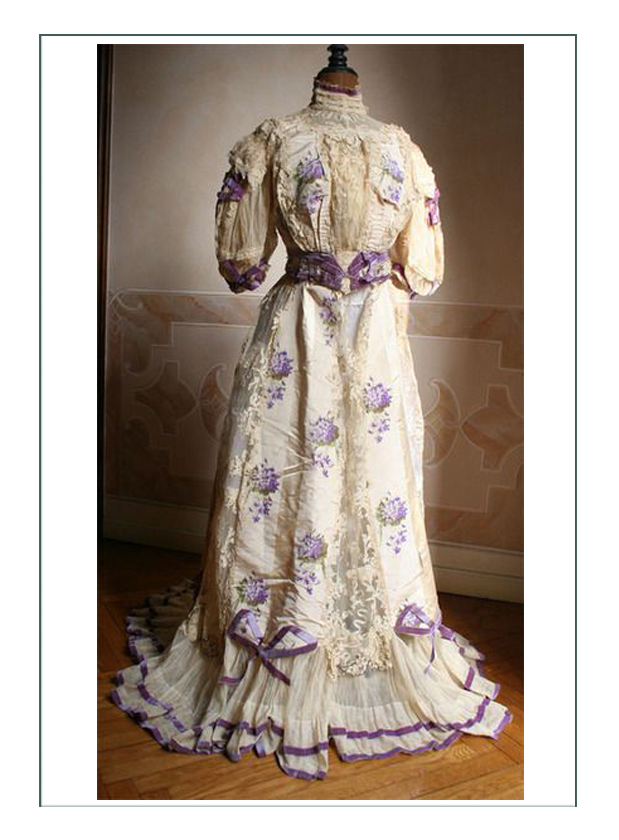
—— (above) “Grand Dame 1904”——
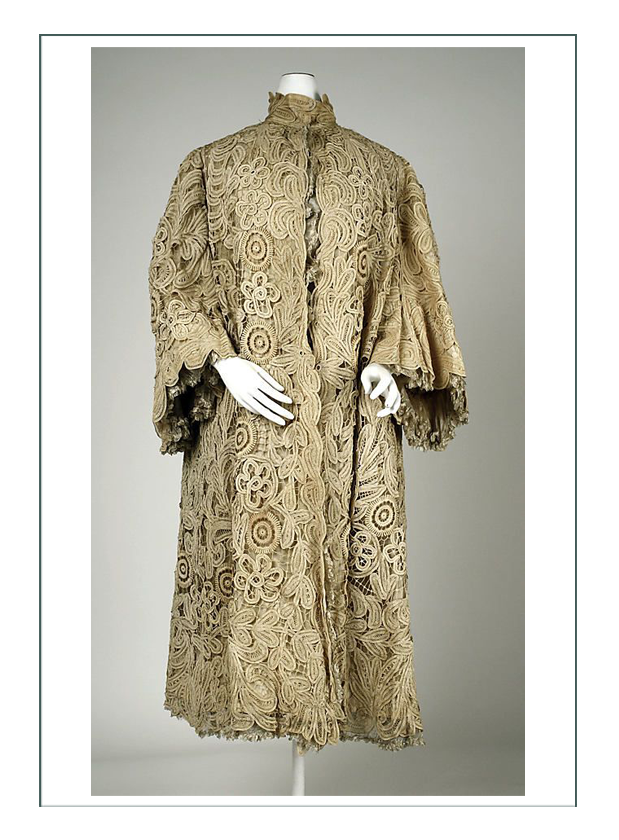
—— (above) “American Made Evening Coat 1904”——
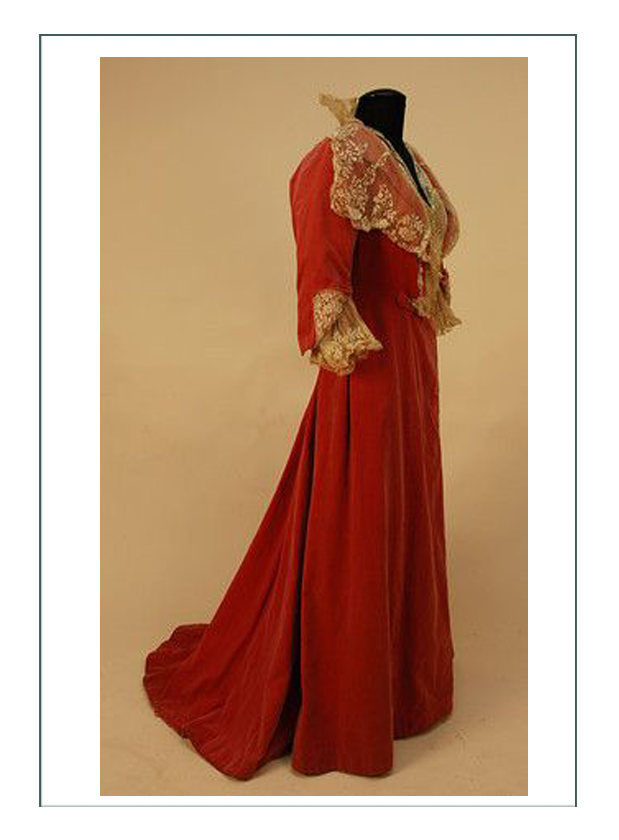
—— (above) “English Dinner Dress 1904”——
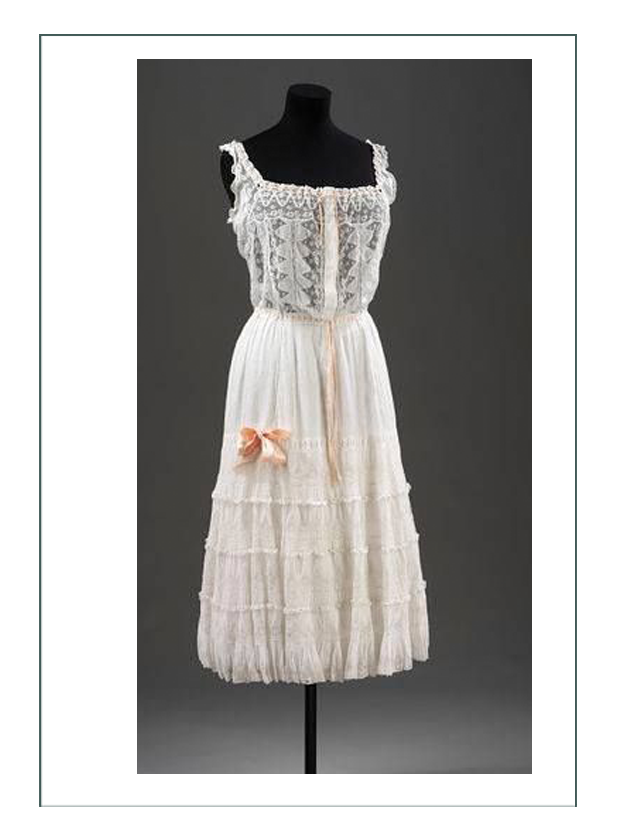
—— (above) “Petticoat 1905”——
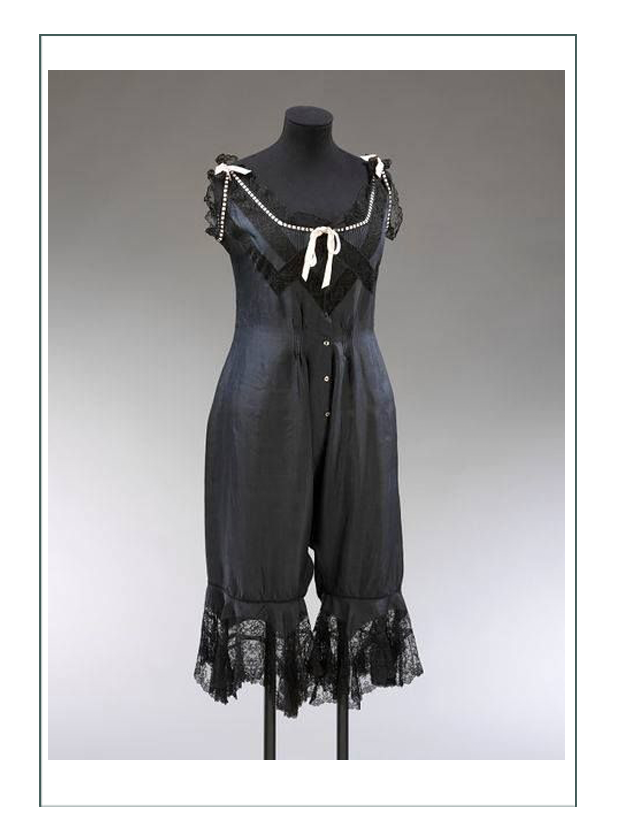
—— (above) “Most Popular the Black Combination 1905”——
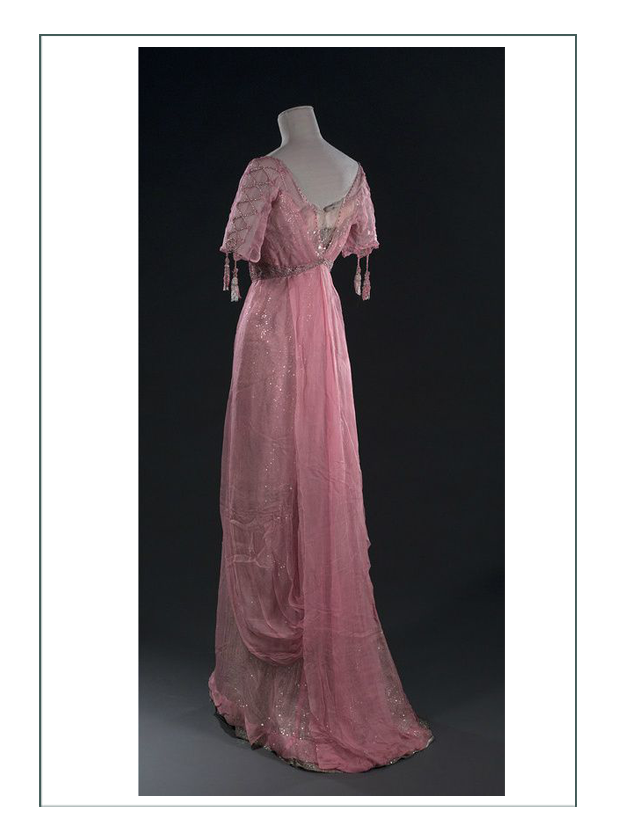
—— (above) “Gown With Train 1905”——
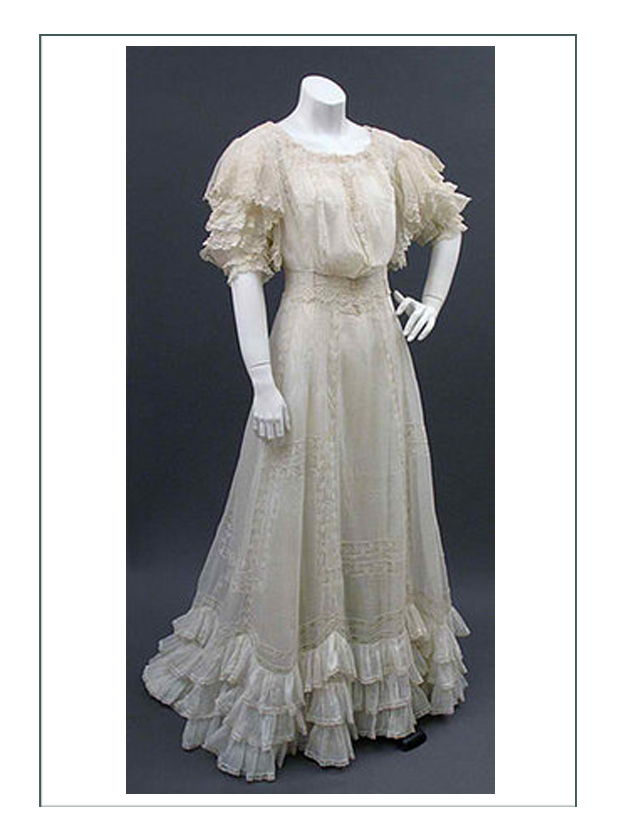
—— (above) “Lawn Dress 1905”——
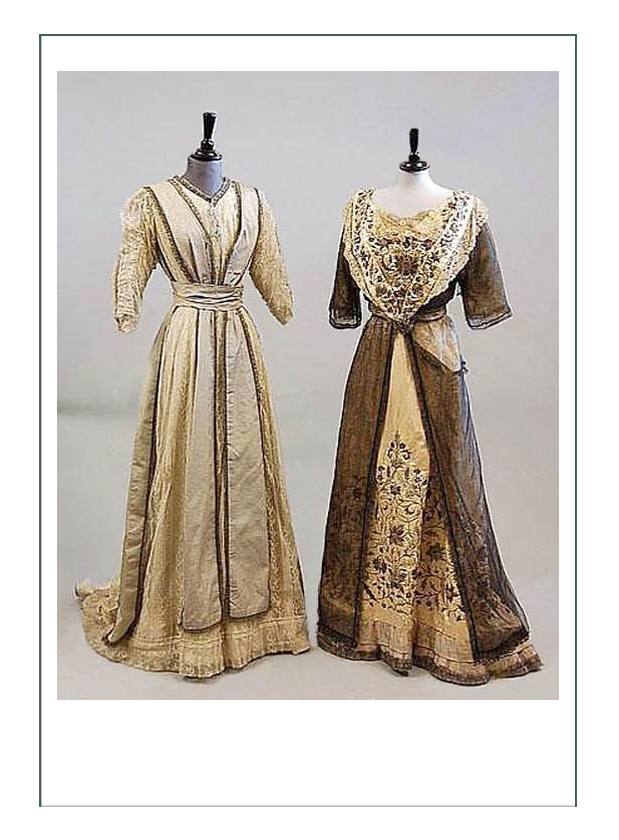 —— (above) “Metal Work from India 1906-1908”——
—— (above) “Metal Work from India 1906-1908”——
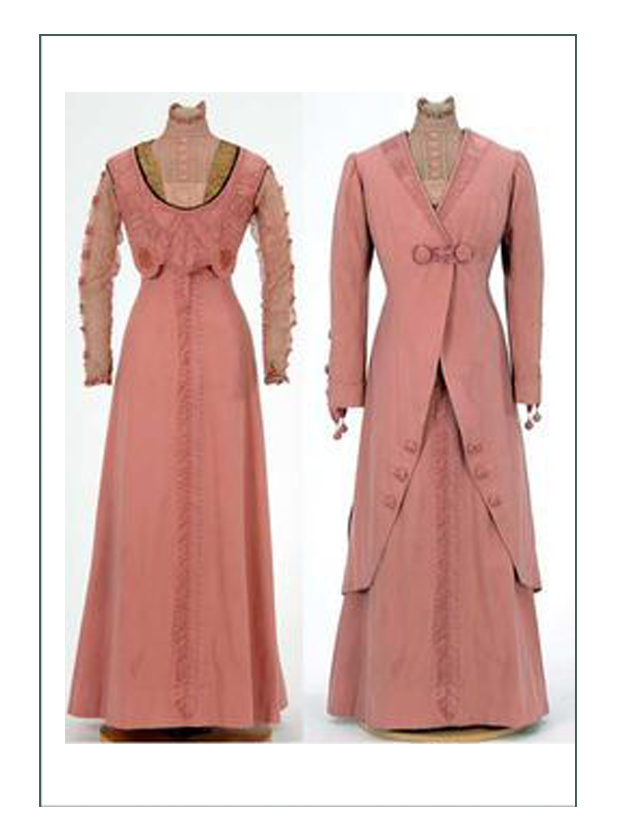
—— (above) “Traveling Ensemble 1906”——
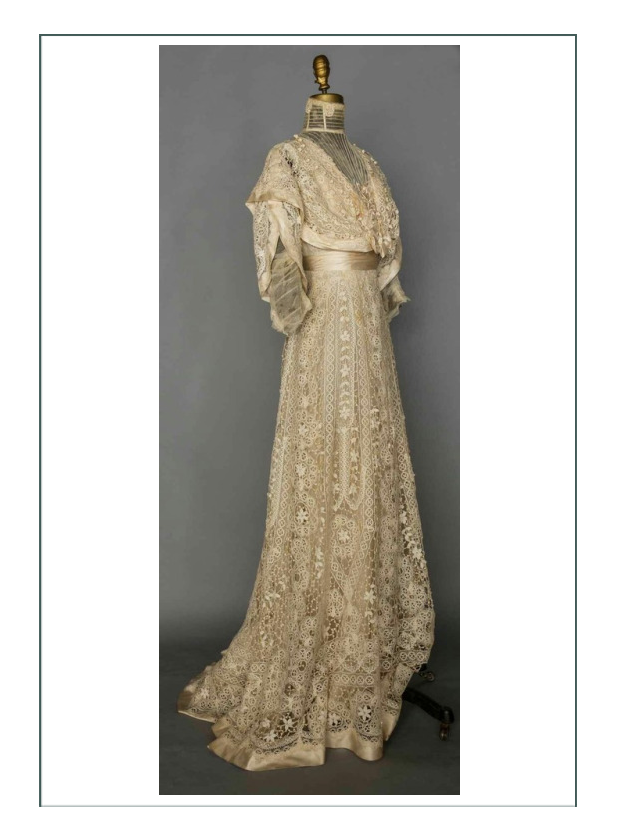 —— (above) “Transition to Princess Dress Line 1906”——
—— (above) “Transition to Princess Dress Line 1906”——
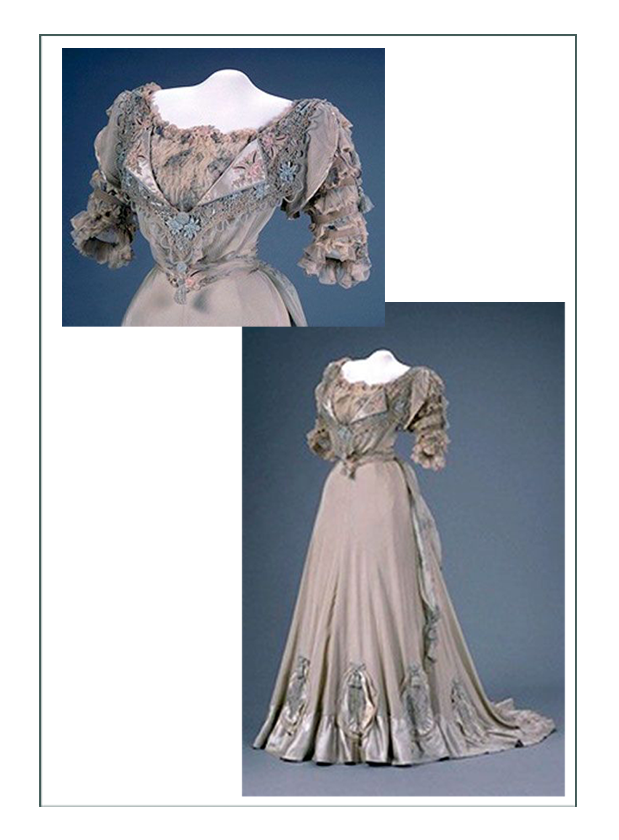 —— (above) “Canadian Bead Work 1907”——
—— (above) “Canadian Bead Work 1907”——
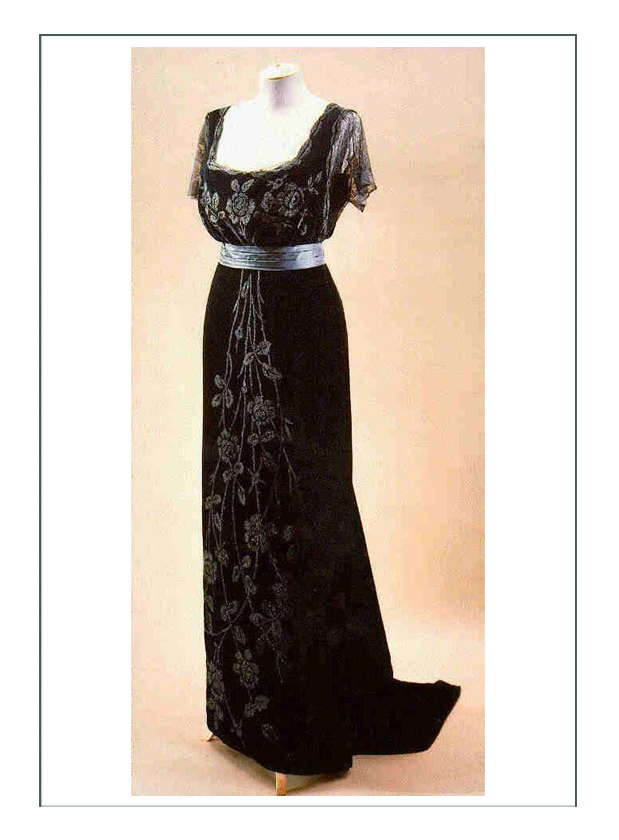
—— (above) “Princess Line 1908”——
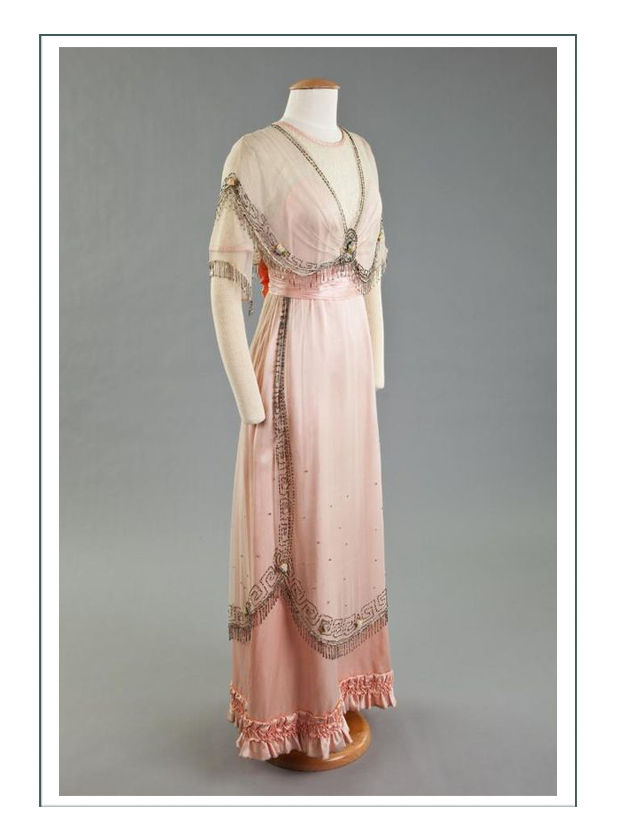
—— (above) “Evening Gown 1909”——
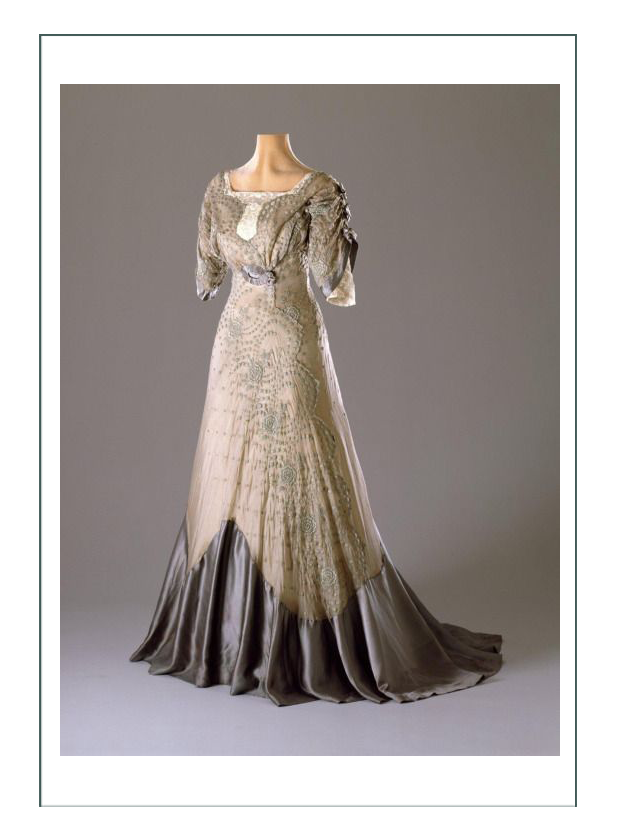
—— (above) “Dinner Dress 1910”——
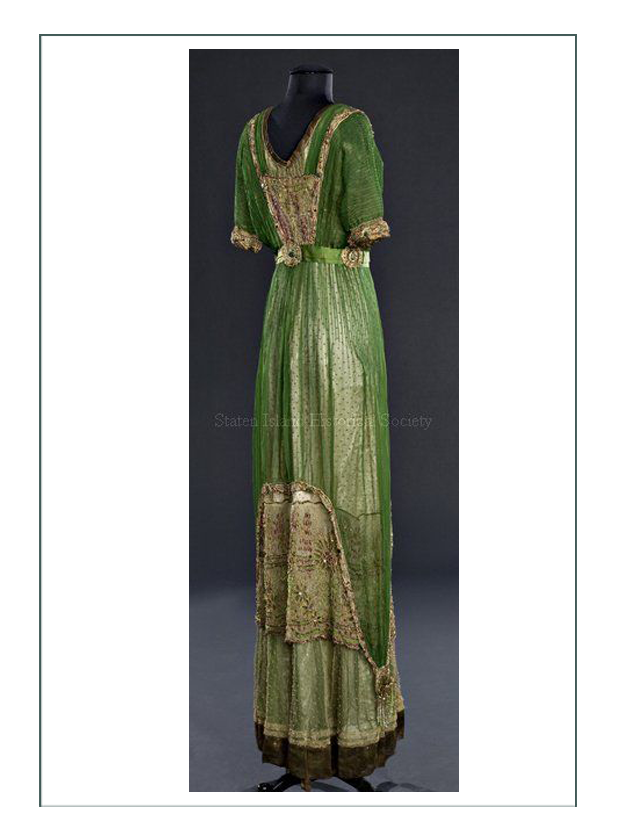
—— (above) “Luncheon Gown 1910”——
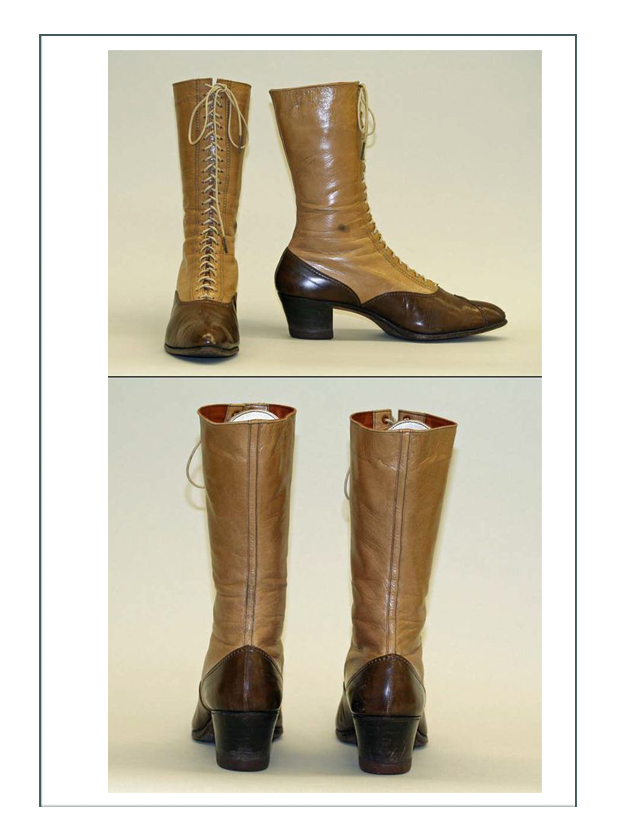
—— (above) “American High Lacing Boots 1910”——
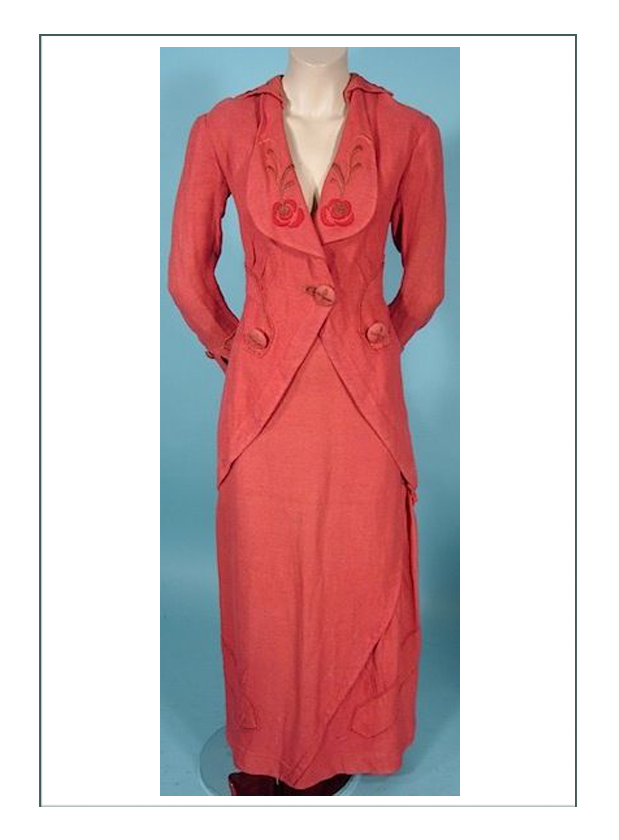
—— (above) “Titanic Travel Suit 1912”——
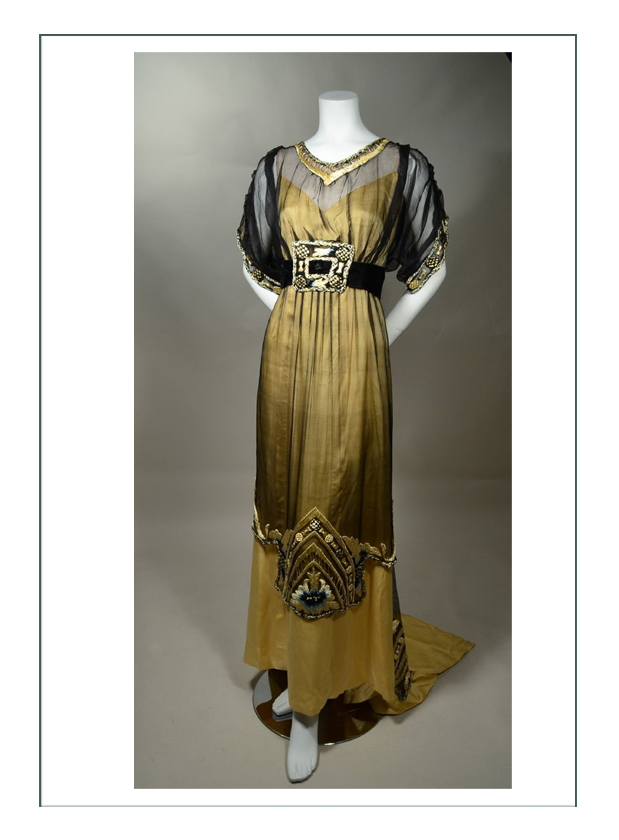
—— (above) “Titantic Authentic Saved from Ship 1912”——
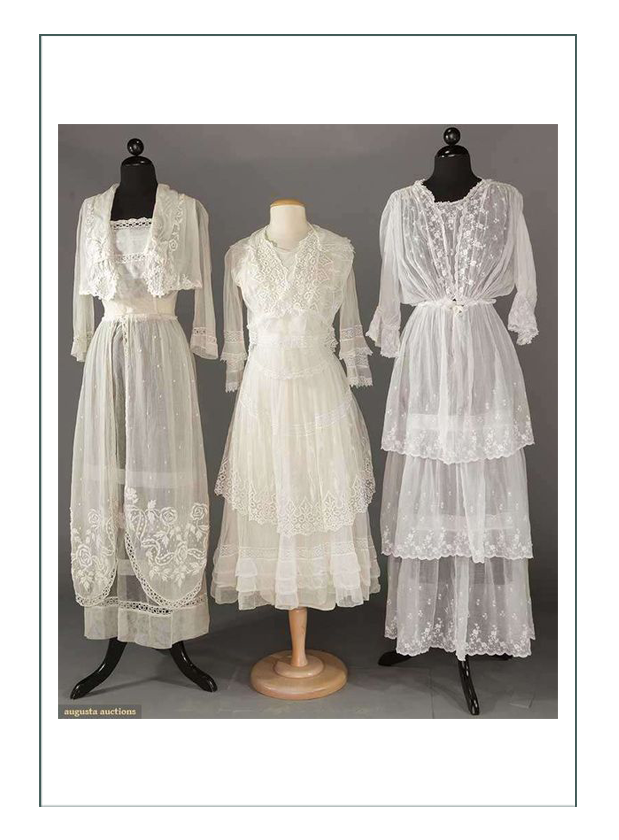
—— (above)“Tea Gowns 1914”——
Click date below to go to a different era. We can replicate most ANY garment you see!


